My family-friendly takes on Hot Wheels, Tomica and other such stuff, as well as documenting any new finds I might have. To find out what I intend to post next, please type "todo" in the search bar.
Don't wanna be here? Send us removal request.
Text

Candid Conversation: The Designer-Base.
Hi. It's been a little while since I've posted here. Work's been getting to me lately. I'll have something planned soon though, trust me. However, I have something to share.
Recently I came up with something I decided to compile in about a day or so: it's what I call the Designer-base. Given my obsession with Hot Wheels designers and research on that topic, this place is a treasure trove of information.
In said document is a list of all regular castings (not inclusive of 100% castings) from 1968 to the present day, listed in a text format. This list is accurate to the best of my memory and checking with sources; anything that is wrong will be changed in due course and anything new will be added as well.
You may access the database by clicking here. Until I write something else here, let's talk about that.
0 notes
Photo

Candid Conversation: The Vector Saga
At long last, here we are. The last post of what I have termed the Vector Saga. This was the post I wanted to do for a while, but couldn’t as I didn’t have the WX-3; well folks, it’s finally time. So sit back, relax, grab some popcorn, a drink or maybe a monaka, as I tell you the story of Vector Motors. This is... the Vector Saga.

Early Days
Vector Motors is an American car company founded by Gerald “Jerry” Wiegert, based in Wilmington, California. The company was known to manufacture supercars and the like.

The company’s roots can be traced back to 1972, when Wiegert teamed up with renowned automotive designer Lee Brown to create a company known as Vehicle Design Force, which would manufacture a vehicle known as The Vector.

Literature at the time stated that The Vector would be available with a DOHC Porsche engine (among various other engine options) and a pricetag of $10,000. The first prototype (shown above) was showcased in 1972, however, this version of the car was non-functional.

Birth of the W2
Wiegert then went back to the drawing board to design a further few iterations of The Vector, resulting in the W2. The W2 took its name from the founder of Vehicle Design Force, Jerry Wiegert, as well as the number of turbochargers intended to be in the car. The W2 was first showcased at the 1976 Los Angeles Auto Show as a non-running prototype; Wiegert attempted to market the car to potentially put it into production, but these never came to be due to insufficient backing and the financial downturn. As such, Wiegert opted to continue refining the car. Perhaps rather appropriately, Vehicle Design Force was renamed in 1977 to become Vector Aeromotive Corporation.

Numerous other prototypes followed, and the first functioning version of the W2 appeared in 1978. Powered by a 5.7L Chevrolet small block V8 with twin turbochargers, the W2 was claimed to be able to hit 230 mph (370 km/h). Over time, the car went through numerous running tests and was displayed at various auto shows worldwide, usually with color scheme changes and other detail improvements. The car managed to reach a top speed of 242 mph (389 km/h) on the Bonneville Salt Flats.

As time went on, Wiegert continued to push for the W2 to enter production, attempting to generate enough capital for that end. He ultimately generated enough capital in 1989, with the final version of the W2 entering production as the W8. The W2 is still owned by Wiegert but has since been dismantled.

Wiegert’s Big Break
Designed by Wiegert and head of engineering David Kostka, the W8 helped Wiegert to realize his dream: to build his own supercar. His company quickly grew, from a single building and four employees to four buildings and eighty employees. With a design inspired by that of the Alfa Romeo Carabo, the W8s were assembled in Vector’s Wilmington, California plant. Powered by a 6.0L twin-turbocharged Rodeck V8, the W8 was claimed to be able to reach a top speed of 242 mph (389 km/h). The full specifications of the W8s are detailed in an earlier post you can access by clicking here.

As Vector was designing their W8, Wiegert was already planning for a successor, which would be known as the AWX-3 (Avtech Wiegert Experimental Model 3), better known as the WX-3. The WX-3 was first showcased at the 1992 Geneva Motor Show as a non-running prototype design study, but gained a Rodeck V8 engine and a roadster counterpart, the WX-3R, for 1993, along with a repaint to advertise Aquajet, Wiegert’s other company, specializing in personal watercraft. I have similarly detailed the specifics of the WX-3 in an earlier post you can access by clicking here.

Here Comes A New Challenger
By 1993, Vector Aeromotive was running dry on funds and were unlikely to have the capacity to continue on manufacturing automobiles; production of the W8 had also stopped after only twenty-two cars were built. At this point however, a rather unknown company had risen from the ashes and offered to invest in Vector. That company was Megatech.

Megatech was an Indonesian company with ties to Bermuda, a tax haven. The company was owned jointly by Hutomo Mandala Putra, better known as Tommy Suharto, convicted felon and son of Indonesian dictator Suharto, and businessman Setiawan Djody; those were about as shady of credentials as you could possibly get. The company was a subsidiary of MyCom Setco, a Bermudan subsidiary of Malaysian company MyCom Sdn Bhd.

With Wiegert knowing that he’d require some amount of investment or capital in order to manufacture the WX-3, he accepted while he was at the Geneva Motor Show that year. Little did he know that this was one of the worst decisions he’d ever make.

Shock, Horror, a Hostile Takeover
With investment now secure, Wiegert could freely produce the WX-3... or so he thought. Because behind the scenes, Tommy Suharto was working behind the scenes to enact a hostile takeover of Vector. Wiegert then received a call to an urgent meeting at the Geneva Motor Show, and flew back to California, and it was here that he knew he screwed up big time with his recent investment.

At this meeting, Vector’s board of directors, under clear influence from Megatech’s bosses, requested Wiegert to resign from his role as owner and take up a role as a designer for the company. Wiegert vehemently refused and went into a meltdown, firing all his employees, hiring armed guards and changing all the locks at the Vector offices. It was this that ultimately led Wiegert to be fired from his own company, and he was subsequently accused of mismanaging company funds.

Megatech’s Early Days
With Wiegert out of the company, Megatech now had free rein to do whatever they wanted... or so they thought. Megatech had intended to produce the WX-3 now with Wiegert’s absence, but could not do so as Wiegert had continuously filed lawsuits against the company regarding them producing the car and protected the design of the WX-3 with patents (and by extension, the W8). As such, Vector had no car to produce, nor did they have a designer to design one for them (they had fired Wiegert whom they had originally intended to be the designer).

Around this time however, Megatech acquired Lamborghini from Chrysler Corporation on 31 January 1994 for $40 million. As such, Megatech relocated Vector’s offices from Wilmington, California to Green Cove Springs, Florida, allowing Vector and Lamborghini to share office spaces in the US. With Megatech having acquired Lamborghini, the company decided to merge both Lamborghini and Vector traits into one car. In order to continue the Vector lineage, Vector hired Peter Stevens, one of the engineers on the McLaren F1 project, to design their new car.

The Unholy Hellspawn
That car was the M12. The M12 combined traits of the stillborn WX-3 and the Lamborghini Diablo into one package, with the overall exterior design by Stevens being essentially a loose copy of that of the WX-3’s design (as the design of the WX-3 was protected by patents). The M12 also used the same 5.7L V12 as the Diablos of the time as the Rodeck V8s used by the W8 and WX-3 were somehow too expensive for them to afford. The first M12 produced was also painted in a patriotic red, white and blue color scheme with the American flag and other patriotic symbols all around.

The M12 was ultimately released in 1995, priced at $189,000; apparently the folks at Megatech thought that a $50,000 premium over the Diablo was enough to salvage the company’s investment. Unfortunately for them, it wasn’t.

The M12 received scathing reviews from those who could get their hands on one, with noted automotive journalist Jeremy Clarkson writing that the quality control of the M12 was “on par with that of a Bulgarian power station”, with doors which didn’t fit properly, a reeking gasoline smell, a “bonkers” seating position and air-conditioning vents which couldn’t be properly pushed into the car. Autoweek magazine went even further, giving the M12 the unenviable award of the worst car they had ever tested.

The devastating exposure of the inefficiencies of the M12 made Megatech jittery, and it was time for their next course of action. In an attempt to shut critics up, Vector’s management elected to venture into the world of motorsport, with the logic that if Vector could score wins in motorsport, the company could be elevated within striking distance of the top high-end car manufacturers at the time, such as Ferrari, with Vectors finally getting the respect they deserved. The category Vector decided to dip their toes into was the IMSA GT Series, in its current form now known as the WeatherTech SportsCar Championship. To do this, Megatech called for the assistance of the now defunct IMSA GT team American Spirit Racing, who modified a pre-production M12 chassis into a race car.

The Vector Goes Racing
That car was appropriately named the Vector M12 ASR GT2, run by American Spirit Racing. The car was fitted with race-specification suspension, brakes, weight reduction and a larger rear spoiler and front airdam. Little modification to the 5.7L V12 was required as the power produced by the engine was within regulations. With close to no prior testing, the M12 ASR GT2 was soon shipped off to the first round of the 1998 IMSA GT series: the 12 Hours of Sebring.

Sebring was a circuit noted to be able to shake cars apart due to its bumpy surfaces, and deciding to debut the car at this circuit was likely something Megatech didn’t think thoroughly through. With Bill Eagle and Dorsey Schroeder at the wheel of the M12, ASR attempted to qualify against competition such as the Porsche 911 GT2, Saleen Mustang GT2 and Honda (or Acura in this case) NSX GT2s; the M12 ultimately qualified a lowly 33rd out of 48 cars. On the day of the race however, Sebring lived up to its name, shaking the M12 apart and out of the race after just 16 laps; the car’s listed classification is 44th.

The M12 would then move to Las Vegas for the second round of the IMSA GT championship, where it also fared poorly; the car qualified second to last, and in the race, the car’s engine overheated and gave out after a mere 2 laps. The car’s final classification was 21st. With two retirements in two races, ASR did not turn up for the third round at Lime Rock and instead focused on the fourth round of the championship at Road Atlanta.

With two new drivers and a new team, the M12 was entered into Road Atlanta by a Jon Lewis and driven by Kevin Allen and Randy Pobst. As usual, the car qualified poorly, qualifying second to last again, and performed even worse during the race, with a gearbox failure retiring the car on lap 43.

From Bad To Worse
With a financial crisis brewing in Indonesia, Megatech’s funds had been reduced significantly, with little money left to do anything for that matter; they needed funds, and fast. To that end, Megatech canceled the GT2 project after just three rounds, and as such, Vector exited the motorsport realm, having made no significant impact to their sales. In addition, Megatech sold Lamborghini to Audi AG in September 1998 for $110 million, ending any hopes for Megatech to dominate the supercar realm. Lamborghini remains with Audi until this day. What Megatech failed to realize though is that this decision would come and bite them in the back. Hard.

Somehow, Megatech managed to conveniently forget that the only car they manufactured, the M12, used a Lamborghini 5.7L V12 engine. With Vector now considered a rival company to Lamborghini, Lamborghini begins to charge Vector for the engines.

In addition to Tommy Suharto having embezzled large swathes of money from the company presumably for his own personal gain, the engine charges that Lamborghini was requesting dealt a crippling blow to Megatech; it got so bad that Megatech was unable to even pay for the engines due to the above factors. This essentially killed M12 production with only seventeen produced. With a severe lack of funds and an appalling lack of any form of competent management, Megatech, in their desperation, offers to Lamborghini an unsold Vector W8 as payment.

Lamborghini actually accepts the W8, but Jerry Wiegert comes out of nowhere and immediately sues Lamborghini for accepting payment of the W8, for the W8 in question was actually his car. Wiegert ultimately won the suit and retained legal custody of the car, but Lamborghini refuses to return the W8; it remains in Sant'Agata Bolognese to this day.

Scrambling For A Way Out
After this spectacle, Megatech, with no car, no engines, no competent leadership and no funds, tried to find a way out of this situation. In a last ditch attempt to save the brand, the company took the M12 ASR GT2 race car and converted it into the SRV8 (shown above).

In what might have been quite possibly the only smart move Megatech made throughout the entirety of their ownership of Vector, Megatech ditched the Lamborghini V12 and replaced it with a General Motors 5.7L LT1 V8 from a Chevrolet Corvette. This was combined with a Porsche G50 5-speed manual transmission along with a transaxle from a Porsche 964. The car was given a mild bodykit in an attempt to spice things up a bit, as well as fixed headlights taken from the Nissan 300ZX (funnily enough like its cousin the Diablo).

The SRV8 was then shown to the public in 1999, and was Megatech’s way of saying that Vector was back and they were going to take America by storm again, in an attempt to get potential buyers to buy their cars. Unfortunately for them, nobody bought the idea, and sure enough, they weren’t going to; just a few days after the SRV8 showed its face for the first time, Vector shut its doors permanently. Vector was then sold to American Automotive, and Megatech has not been heard from since.

Reborn from the Ashes
After some years, Wiegert purchases the ruins of Vector Aeromotive from American Automotive. He then relocates the company from Florida back to Wilmington, California, and renames the company to Avtech Motors, then Vector Supercars, and finally the current name of Vector Motors. Mullings about Vector designing a new car began to surface, and in 2006, Wiegert proved those rumors true by announcing that he was developing a new car: the WX-8.

Wiegert unveiled the WX-8 in 2007, featuring rather optimistic specifications such as a top speed of 270 mph (430 km/h), 0-60 in 2.3 seconds and somewhere between “over 1250” and “1800+ horsepower”, from either a 10.0L twin-turbocharged V8 or a 7.0L hybrid V8. The car received criticism for resembling a fourth-generation Chevrolet Camaro and use of Toyota Supra headlights. As of 2018, the WX-8 was reportedly still under development, with Wiegert selling both WX-3 prototypes in 2019 in order to secure funding.
I hope this gives you a better idea about what to expect from this American supercar company. And thus ends The Vector Saga.
This article is the third in a three-part series I will call The Vector Saga. The series will document the W8, the WX-3, and the history of Vector Motors as a whole.
3 notes
·
View notes
Photo

Casting Call: Vector WX-3
Well, it’s been a long time since I’ve written one of these, and now, here comes the second installment of probably my favorite saga to date: the Vector Saga. Thanks to the current situation, the delivery of my car was delayed, but it’s here now, and here we are.
Remember the W8? That wedge-shaped car which I felt was more extreme than the already extreme Lamborghini Countach? It’ll need a worthy successor... and this’ll be it. This... is the Vector WX-3.
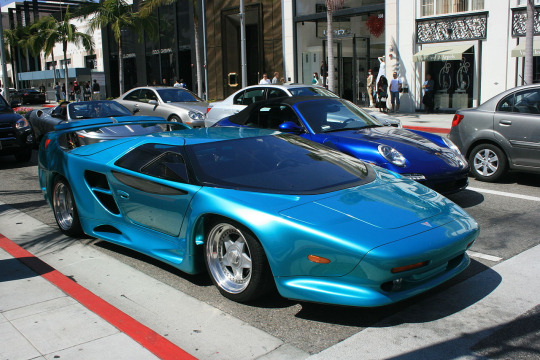
First, as usual, a bit of background. The Vector WX-3 was a prototype American sports car manufactured by a company known as Vector Motors, then known as Vector Aeromotive. The car was designed by Gerald “Jerry” Wiegert, founder of Vector Aeromotive. The car was officially known as the AWX-3, standing for Avtech Wiegert Experimental Model 3; the “3” signified that the WX-3 was the third model Vector had made, after the W2 and W8.

The WX-3 was intended to be the successor to the W8, conceived by Wiegert in 1992. The WX-3 was more extreme than the W8 was, featuring three engine configurations, allowing for some ludicrous power that would be even on par with modern hypercar standards.

The beating heart of the WX-3 was intended to be a 7.0L V8 with variable boost for the twin-turbochargers. Yes, this thing had variable boost, just like the W8. This allowed for settings between 600 BHP to a staggering 1,200 BHP, on par with many modern hypercars. The prototypes used the same highly-modified 6.0L Rodeck twin-turbo V8 as seen on the W8.
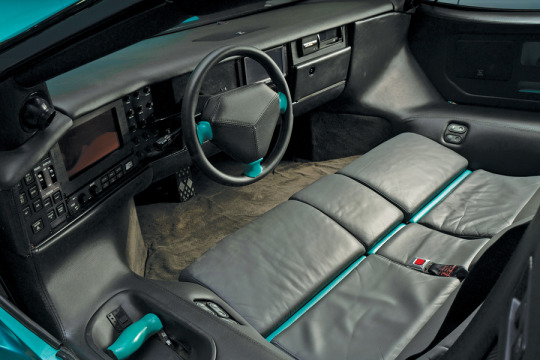
The car’s interior was also very similar to that of the W8’s, featuring a screen as opposed to analog gauges. The car also featured the same Sony CDX-A2001 ten-disc CD changer gracing the right side of the cockpit as the W8, as well as the same 3-speed Turbo-HydraMatic 425 automatic transmission mated to that beast of an engine; the transmission also had the same fighter aircraft throttle-like device. Vector employees had stated that while the prototypes used the three-across seating arrangement found on certain W8s, it would be more likely that the production WX-3 would use two bucket seats.

The car also featured the same scissor door setup as the W8.
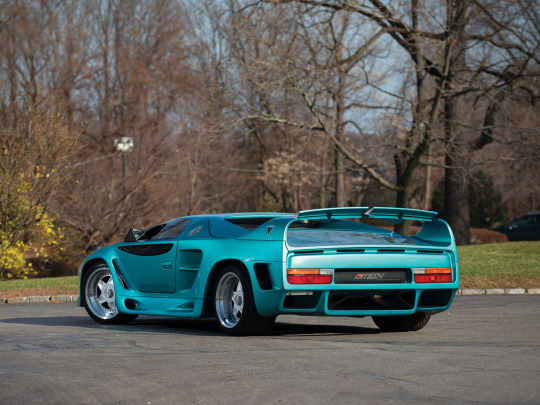
Rear visibility on the WX-3 still wasn’t too great, although it was a marked improvement over the practically non-existent rear visibility of the W8. The rear of the car looks a lot more subdued compared to the front. As usual, it appears the location of the license plate holder was likely an afterthought.

The WX-3 also incorporates what I guess could be considered a very early version of active aero systems, featuring two movable flaps which lifted up when the car was braking, acting as an airbrake.

The WX-3 was first shown off at the 1992 Geneva Motor Show, although at first, strictly a design study, sans engine. The car was originally painted silver. After the car returned from Geneva, a related car joined it: the WX-3R.

The WX-3R was essentially the roadster version of the WX-3, with both sharing mechanical components and similar styling. However, the WX-3R featured dual bucket seats as opposed to the three-abreast seating of the WX-3 and was painted purple.
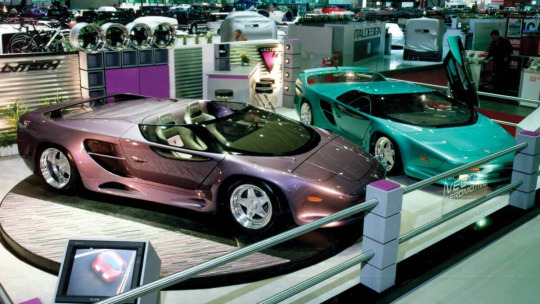
The WX-3 and WX-3R were then both displayed at the 1993 Geneva Motor Show, with the WX-3 having been repainted into aquamarine; this was done to promote another of Wiegert’s companies, Aquajet, a manufacturer of personal watercrafts, as the Aquajet logo featured aquamarine and purple as its primary colors. In fact, both the WX-3 and WX-3R appeared on the Aquajet website; however it appears the website is currently broken and will require an archival tool such as the Wayback Machine to access.
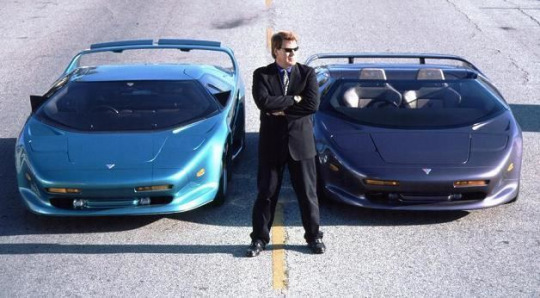
The WX-3 was intended to be put into production in 1993; however, problems began to surface.
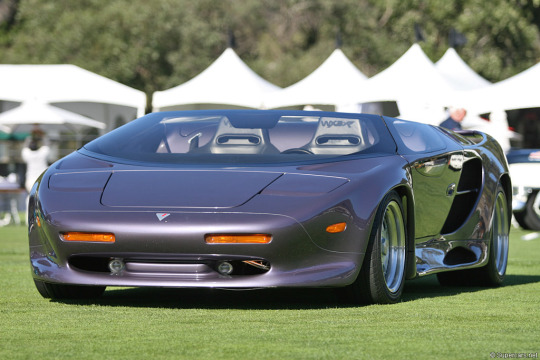
In 1993, as Wiegert was preparing for production of the WX-3, a rather shady Indonesian company with Bermudan ties named MegaTech forced a hostile takeover of Vector Aeromotive; this ultimately led to the firing of Wiegert from his own company. MegaTech then attempted to produce the WX-3, but Wiegert sued the company and copyrighted his own design, so MegaTech could not produce the WX-3. Ironically, this would also spell the end of the WX-3; only two were produced.

Wiegert eventually regained control of the company and has been working on a new car known as the WX-8 for numerous years now; in fact, it’s been so long we may as well call it developmental hell. The WX-3 and WX-3R also came back under Wiegert’s ownership. However, in order to fund development of the WX-8, Wiegert decided to auction off both the WX-3 and WX-3R at a Sotheby’s auction in 2019; both cars were ultimately auctioned off in mid-January 2019, with the WX-3 fetching $617,500 and the WX-3R fetching $500,000. Both are now in the hands of private collectors.

Prior to the auction, the WX-3 appeared in an episode of the Burke’s Law reboot and was also spotted at various car shows.
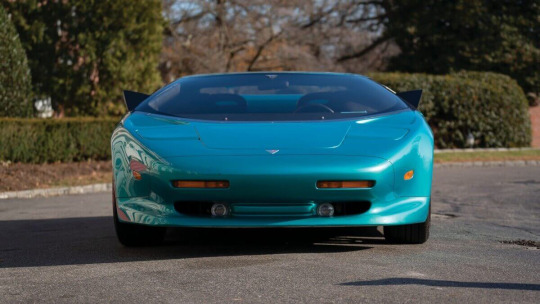
Okay, now that we’ve gotten all that out of the way, let’s get to the reason why you’re here.

This… is the Hot Wheels version of the Vector WX-3. Named the Vector “Avtech” WX-3 in the Hot Wheels lineup, this casting was first introduced in 1993 as a Vector employee exclusive, as shown above; the car was painted in the silver color that was originally on the actual car. Only 500 of this version was produced. This casting, like many other castings designed throughout the ‘80s and ‘90s, was designed by Larry Wood.

A more common version, painted in the purple as seen on the real WX-3R, was released the same year. A version exists of the purple version with normal 5SP wheels.
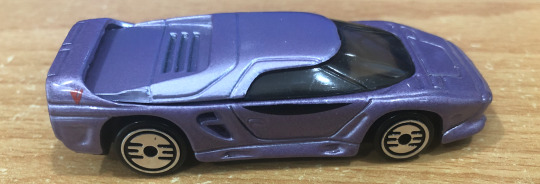
The WX-3 has a plastic roof which is riveted onto the rear. No back window is present. This casting features notably very few tampos, apart from the Vector logo on the wing and the black semicircle on the door intended to represent the lower window. The side vents are noticeable open and one can peer through them.

For the record, there isn’t very much going on in the rear of this casting either. Just the rear mesh grill, taillamps and triangular exhaust pipes.

The WX-3 has one of the least releases of any supercar or hypercar concept made by Hot Wheels around this period, with only five known releases. The casting was retooled slightly in 1997, with the prominent side vents closed off. This would ironically be the casting’s last release to date, in the Super Show Cars 5-Pack in 1997 (a version exists with open side vents, shown below), alongside the Dodge Viper RT/10, Jaguar XJ220, Avus quattro and Zender Fact 4. A few other combinations of the 5-Pack exist but this is the only one containing the Vector.

As mentioned above, this casting has not been seen since 1997; it has not been featured in any edition of the Final Run Series, but is assumed to have been retired since the casting has not appeared in the mainline for over 20 years and is unlikely to return.
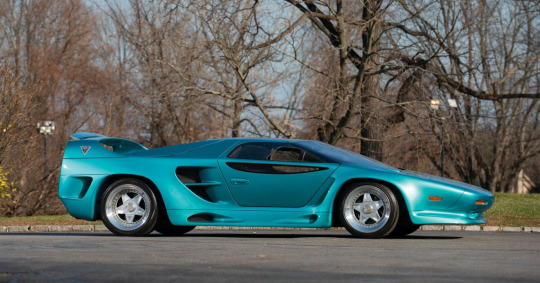
I hope this long writeup has given you a better idea on this turbocharged thrasher, and what is quite possibly my new favorite supercar from the ‘90s; step aside, Ferrari F50. As usual, I’d do something like this any day.
This article is the second in a three-part series I will call The Vector Saga. The series will document the W8, the WX-3, and the history of Vector Motors as a whole.
#hotwheels#CastingCall#vectorwx3#vectoravtechwx3#avtechwx3#larrywood#ThatTimeForgot#vectoraeromotive#thevectorsaga
3 notes
·
View notes
Photo

That Time Forgot: GM Ultralite
I kind of like this new life of mine, being able to pursue my own interests and stuff. However, I feel it is a disservice to keep this blog inactive, hence why I’ve decided to put this post up to show that this blog is not dead. Anyway, enough talk about this, and let’s talk about what you’re really here for: to talk about this car.
“100 mpg in the ‘90s? Impossible.” Is what many people will say... but they’ve definitely not seen this car before. Let’s talk about that.

This is the General Motors Ultralite, a car from 1992 that still looks futuristic... even today. Designed by Burt Rutan, Jim Lutz, Steve Small, Bill Rohlfing and Jim Bieck, the Ultralite was designed as a four-seat car that could comfortably carry all four passengers, have adequate performance and produce low emissions and astonishingly high miles per gallon.

First introduced at the 1992 Chicago Auto Show, the Ultralite was not just your normal concept car; it was actually fully functional. But then again, pretty much all of GM’s concept cars of that time were functional. This car featured a RR layout; or for those who don’t know, rear-engined, rear-wheel drive. A ten-minute promotional video was also produced.

The body of the Ultralite was made of carbon fiber and built by Scaled Composites; the entire body only weighed 420 pounds (191 kg)! With the body on, the car weighed about 1400 pounds (635 kg).

Performance of the Ultralite was expected to match or better that of GM’s quintessential compact sedan, the Chevrolet Lumina. As the body itself was so light, the Ultralite didn’t need too big a power plant to power it. The rear-engined car was powered by a 1.5L inline-3 two-stroke engine producing 111 horsepower, mated to a Saturn 4-speed automatic transmission; GM claimed top speeds of up to 135 mph (217 km/h). It also had a claimed 0-60 time of about 8 seconds, which, if you think about it, is pretty darned good for an engine of this size...

The Ultralite’s engine was placed in the rear in what was termed a “power pod” configuration, which was basically GM’s term for “removable engine”; this reminds me of the IAD Alien which had a very similar concept. This “power pod” had a number of advantages, including easier service and the added modularity of fitting different types of power plants.

The shape of the Ultralite was highly reminiscent of that of the older Ford Probe concepts designed by Ghia.

The interior looked somewhat futuristic and honestly quite nice, but the best part of the Ultralite’s appearance... were those doors.

Yep, that’s right; the Ultralite sported gullwing doors. It also... had no B-pillar.

Regardless, the Ultralite was probably one of the most futuristic cars ever conceived. Featuring fiber-optic headlamps and LED taillamps, the car also featured an airbag suspension on all four wheels, allowing it to ride high or low depending on what speed the car was going at. It also had an astonishingly low drag coefficient of 0.19, far lower than most cars of the time.

While the doors were (and still are) quite impressive, quite possibly one of the most impressive things about the Ultralite was its fuel economy. The car (being fully functional) was actually tested and rated by the EPA, clocking in a staggering 88 mpg; GM claimed the car could clock in 100 mpg if the car was driven at a sustained 50 mph (80 km/h) cruise.

GM did consider putting the Ultralite into production, although with a body made of carbon fiber it would have never been affordable. Additionally, with California’s zero-emission vehicle mandate looming, GM made a decision to scrap the Ultralite and produce the EV1 (above) instead. And we all know how that went...

However, not all was lost. Now, with the introduction of ever-tighter Corporate Average Fuel Economy standards, carbon fiber has become almost mainstream and smaller and smaller engines have become the norm to meet these strict standards, something the Ultralite was able to achieve... twenty years before the competition.

A total of two Ultralites were produced. Normally, I believe they sit amongst a sea of other innovative cars at the GM Heritage Center, but one Ultralite currently sits proudly amongst a sea of iconic movie cars in the Hollywood Dream Machines: Vehicles of Science Fiction and Fantasy exhibition at the Petersen Automotive Museum. Oh, speaking of movies... we’ll get to that bit now.

Due to its unique and futuristic shape, the Ultralite has been used in various science fiction movie productions, usually representing a car of the future. It had a number of big breaks in a number of science fiction films, all of which will be detailed below.

The most notable of the Ultralite’s appearances was in 1993, when it appeared in the film Demolition Man, alongside some seventeen other GM concept vehicles. Representing a 2042 Chevrolet police vehicle, this Ultralite was driven throughout the film and played a highly prominent role.

Twenty fiberglass replicas of the Ultralite were produced, which were used throughout the film as either police cars or civilian cars, recognizable by whether they have the “siren dome” or not; civilian Ultralites usually played minor background roles. There exists a rather grainy picture showing three of these replicas. Whether the two actual carbon fiber Ultralites took part in the filming is unclear, although it seems unlikely.

The Ultralite was seen again in the old television series seaQuest DSV, albeit only very briefly, in the episode The Fear That Follows which aired in 1994.

The Ultralite was seen again in the 1999 film Bicentennial Man starring Robin Williams, although again very briefly. Sure, it’s a cool car that’s in the movie, but there’s probably other reasons as to why people don’t remember this film...

Finally, a police Ultralite appeared in the movie A.I. Artificial Intelligence starring Haley Joel Osment. This was the last of its known appearances... well, according to IMCDb anyway.

It also appears that at least one of these fiberglass replicas was auctioned off by Warner Bros. around 2012, although with some generic police livery; as you can see, it looks pretty worse for wear...
Okay, now that I’ve gotten that out of the way, let’s talk about the reason why you’re here: the history of the casting.

This casting was introduced in 1993 in the Demolition Man series, alongside eight other cars that appeared in the movie: these were the Oldsmobile Aurora, Olds 442 W-30, GM Lean Machine, Corvette Stingray III, Pontiac Salsa, Pontiac Banshee, Buick Wildcat and the Chevrolet ACC Camaro (’93 Camaro), intended to represent the Chevrolet California IROC Camaro Concept. The designer of this casting is not known with any certainty, although I suspect it was done by Larry Wood. The Hot Wheels version of the Ultralite depicts the famous police Ultralite as seen in the movie, as evidenced by the siren dome up top.

Like all other Demolition Man castings, the Ultralite was packaged in a box containing a Cryo-Cube (essentially a Park’n Plates box with a picture of the real car instead of a license plate). The windshields and doors of this casting are molded into the body, and as such, are completely opaque; as a result, this car has no interior.

The rear replicates the rear of the real car somewhat well, although the wing up top seems a bit high and the rear “vent” seems a little bit too big as well compared to the real car.

A picture of the real Ultralite’s rear is shown above.

Early versions will say "‘93 WARNER” instead of “1993 MATTEL, INC”; I presume the license with Warner Bros. had expired, so they just scrubbed off the Warner licensing information and put their own on. Something else interesting to note is that this casting has a practically centered center of gravity; as it has a plastic base, this casting would be thought to be quite light, but it is in no way light. As the body is one huge hunk of metal (again, the windows are opaque), the Ultralite is supremely heavy, with all the weight concentrated around the center of the car. This theoretically makes the car better for downhill races, although I would seriously doubt the car’s ability to clear a loop.

The Ultralite enjoyed various releases in the Hot Wheels lineup, most of which having the SAPD-style police livery on it, whether it be with or without SAPD graphics.

This casting was also given the generic name “Police Car” for one of its releases.

Another release simply titled it “Police”, although I believe this is an international only release and doesn’t seem to be documented all that well. Both “Police Car” and “Police” would be used on future releases of the Holden Police Cruiser Hot Wheels released in 1996.

The Ultralite enjoyed the privilege of being released quite often when it was in the lineup, but ultimately this casting was doomed in 2001 for one reason, and one reason only: the Final Run Series. For three years, this casting had not been seen, and then it was thrown into the Final Run series.

The Final Run Series started in 1999 and acted as what I would consider a very glorified funeral for a casting; Hot Wheels would give these cars special tires and paint, in exchange for vowing to never produce them again by cutting their toolings in half. The Ultralite was unfortunately one of the castings to fall victim to the Final Run Series, and although it might not have been one of the more popular castings to retire that year, it was still retired regardless. As the second batch of cars to be Final Run, having been introduced in the 2001 series, the Ultralite will never be seen again in the Hot Wheels lineup unless a new tool and die is created for it, which I believe is highly unlikely. The Final Run Series itself has been on hiatus since 2006. In total, the Ultralite had seven releases.

Of note is that the image above has some interesting details. The Ultralite was released simply as the “Ultralite” in the Final Run series, but its full name is spelled out in the rear of these cards. “Garbage Truck” refers to the Recycling Truck, but it gets a pass since the casting was actually titled that for release. “Porsche 911” refers to the P-911 casting, but that gets a pass for the same reason. And finally, “Scullrider” refers to the Skullrider (or Grim Creeper) casting; this is simply a spelling error and the casting received the correct spelling on the actual production card.

Always on the receiving end of police-styled decals due to its fame in Demolition Man, the Ultralite will be dearly missed (by me, at least) in the Hot Wheels lineup, and I wouldn’t mind seeing a modern recreation of the Ultralite return to the Hot Wheels lineup as a premium piece.

I hope this post has given you a better idea on the history of this futuristic GM concept car, and the history of its small Hot Wheels counterpart. As usual, I’d write something like this any day.
1 note
·
View note
Photo
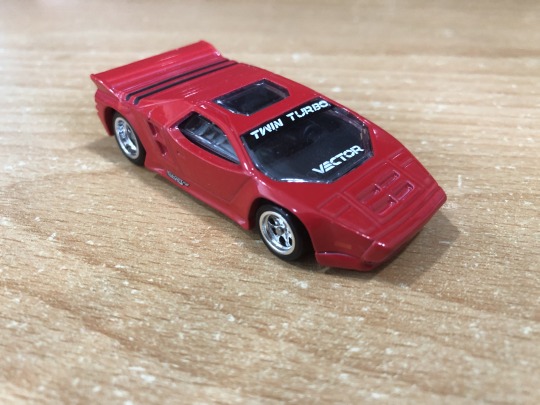
Casting Call: Vector W8
First off, I’d like to apologize for the fact that I’ve not been updating my Tumblr lately. I’ve been busy at work and haven’t had time to write something. To make up for this... I’m writing quite possibly one of my longest posts yet.
By popular demand, this is the casting you chose on Instagram for me to document: the Vector W8. Grab some popcorn, a drink or some music... and enjoy the read. This is also in some ways a car that time forgot, but it’s not a concept car... but I can break the rules because I made them.
When it comes to cars of the ‘80s, there is a debate as to what the best car of the era was. Many say it would be either the Lamborghini Countach or the Ferrari Testarossa. But I have something that is neither of those things. Today, we’re going to take a trip down memory lane and explore the car that attempted to elevate a small company to the dizzying heights of the supercar realm. This... is the Vector W8.
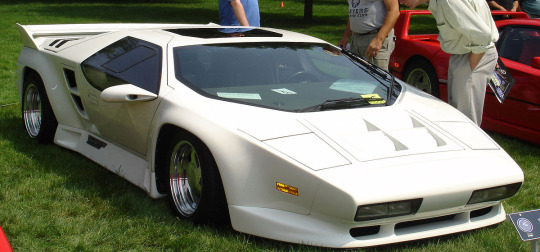
First, here’s a bit of background. The W8 was manufactured by a company known as Vector Motors, then known as Vector Aeromotive. The company was founded in 1971 as Vehicle Design Force by Gerald “Jerry” Wiegert in Wilmington, California; we’ll get to the full history of Vector in a post in the near future because it is honestly very interesting.
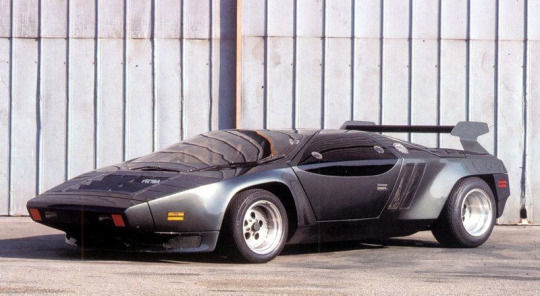
In essence, the W8 was a highly refined version of the Vector W2, one of the company’s initial prototypes (the “W” in the name stood for “Wiegert”). Wiegert wanted to put the W2 into production, but an economical downturn prevented him from doing so. However, by the ‘80s, Wiegert had eventually secured enough capital through public stock offerings and even various lawsuits, allowing him to chase his dream: to build his ultimate sports car, designed and built by his own company.
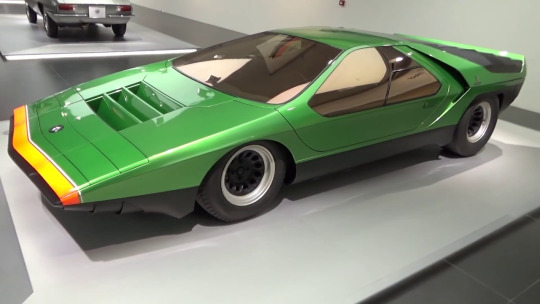
Design inspiration for the W8 (and by extension the W2) came from this green car: the Alfa Romeo Carabo (Hot Wheels actually did a model of this way back when). Its sleek, futuristic and aerodynamic design was perfect for Wiegert, especially with the aerospace theme the company was going for in the ‘80s.
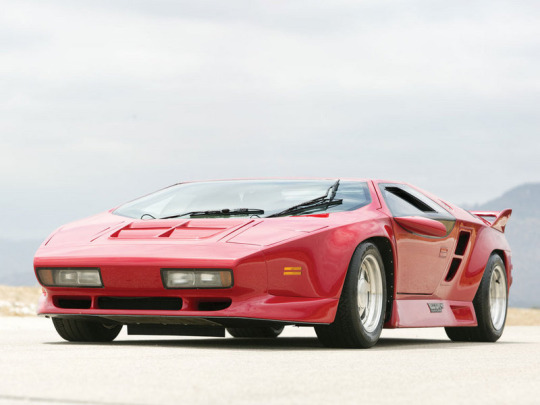
Combining the sleek looks of the Carabo with the geometry and technology of fighter jets of the time like the F-15 Eagle, F-16 Fighting Falcon and F/A-18 Hornet, Wiegert and chief designer David Kostka set out to create what would be quite possibly the most insane supercar of the ‘80s, and probably still is now: the Vector W8. The term “Aeromotive Engineering” was used to describe the process of manufacturing this car, for the car used the newest and most advanced aerospace materials when manufacturing the W8.
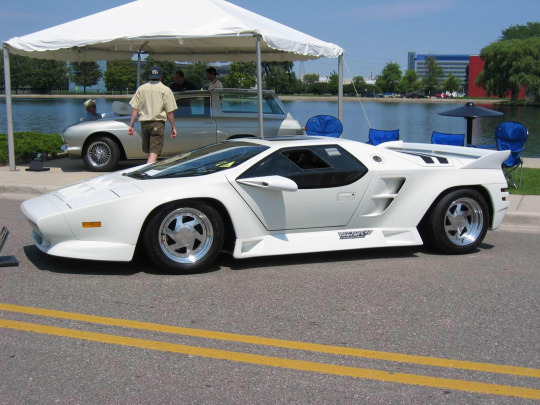
The car passed the mandatory DOT crash tests and emissions tests. It used a semi-aluminum monocoque chassis which was epoxy bonded and riveted using 5000 aircraft-specification rivets with an aluminum honeycomb floorpan. The body was made mainly of carbon fiber and Kevlar. The car featured scissor doors, like a Lamborghini.
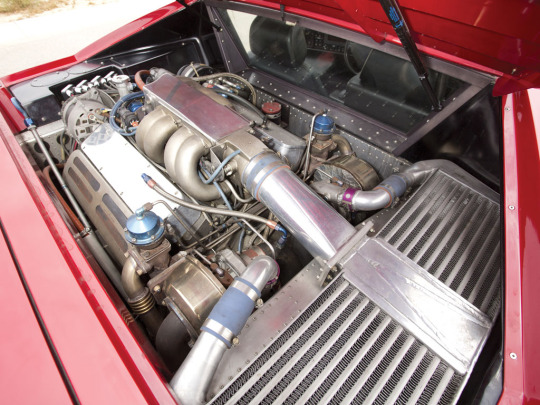
The beating heart of the W8 was this: a highly-modified aluminum resleevable 6.0L Rodeck twin-turbocharged racing V8 with variable boost pressure. The engine produced 625 horsepower and made 649 lb⋅ft (880 N⋅m) of torque at 4,900 rpm at 8 psi of boost pressure, and as if the Rodeck V8 couldn’t get any more ridiculous, it featured TRW forged pistons, Carrillo stainless steel connecting rods, stainless steel valves and roller rocker arms, a forged crank, a dry-sump oiling system with three separate filters and braided stainless steel hoses with anodized red and blue fittings. This engine sounded mad; click here to hear a Vector starting up and revving.
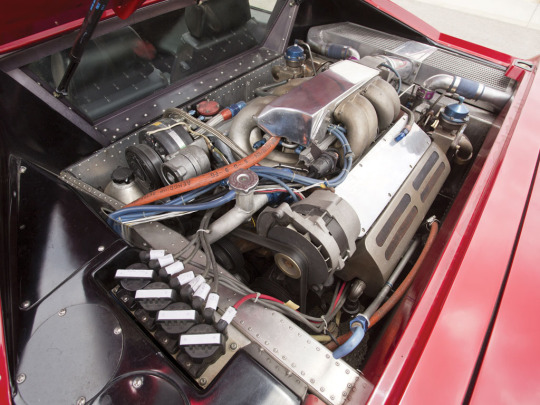
Yes, you heard that correctly; variable boost. The boost for both turbochargers was adjustable from 8 to 14 psi through a dial in the interior. And speaking of which, let’s talk about that next; because, if you thought the engine was already mad enough, the interior is on a whole other level.
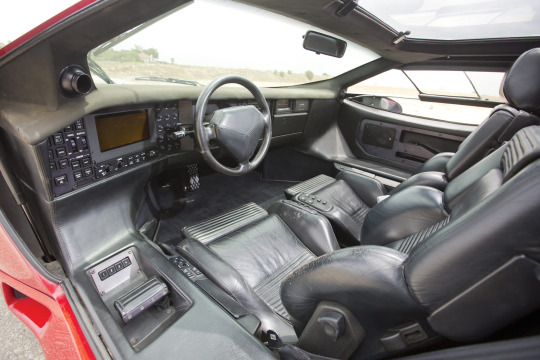
As you can see, the interior of the W8 is mad. Fighter jet-inspired screen? Check. A million buttons everywhere? Check. Gauges? ...no check. And hang on... is that what I think it is? A Turbo-Hydramatic 425 transmission?
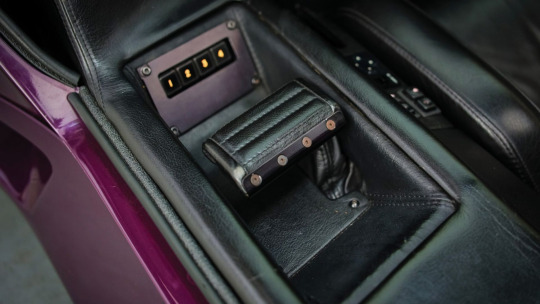
Yep, that’s right, and that just makes the car a lot more insane; this ridiculously powerful 6.0L Rodeck V8 was mated to a 3-speed Turbo-Hydramatic 425 automatic transmission. Next to it on the right was the handbrake, sort of shaped like the throttle on a fighter jet. Due to the placement of the transmission and the handbrake, the driver side doorsill is very, very wide, making it a bit tough for the driver to get in and out of the car. You will also notice that there are buttons on top of the gear stick. I’ll get to those now.
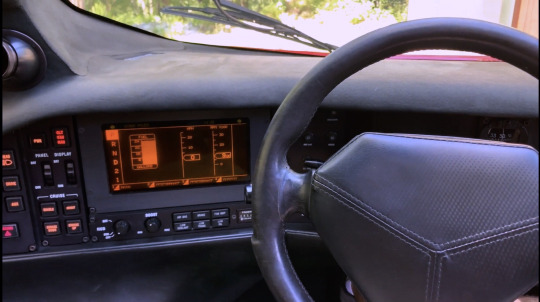
As if this car couldn’t get any more ridiculous. This is the screen of the Vector W8, with four different settings (controlled with those four buttons), marked “Main”, “Performance”, “Performance” again and “Chassis”. This is the “Main” screen, showing the odometer, fuel gauge, speedometer and tachometer.
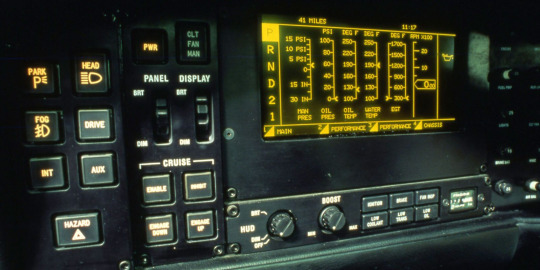
This is the first “Performance” screen, showing engine temperature, oil pressure and temperature, the tachometer reading and various other metrics.
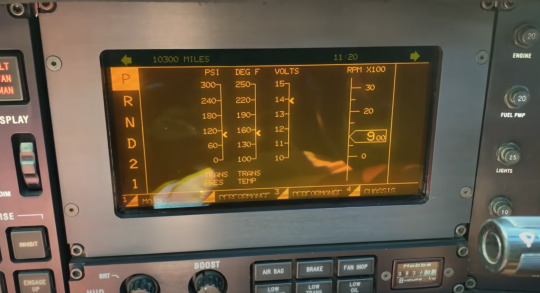
The third screen was the second “Performance” screen, showing the transmission pressure (because it had a torque converter) and transmission temperature as well as battery voltage.
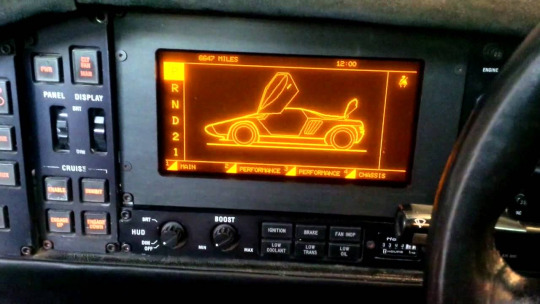
The last screen was the “Chassis” screen, which showed a picture of the W8 which updated in real time when a door was opened, when the engine compartment was opened and so on.
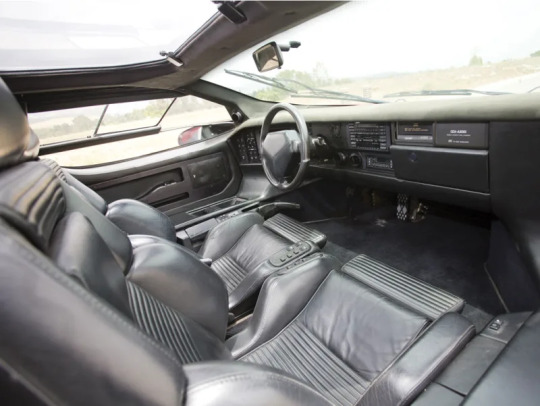
On the other side, you will notice that the W8 doesn’t actually have a partition between the driver and passenger side footwells. So it is a little awkward. This car also has no glovebox; in its place is a... CD changer?
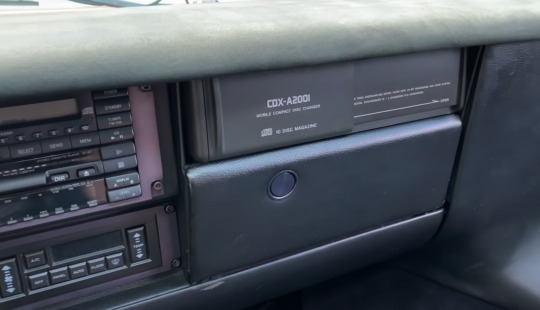
Yes, that’s right. The car came with an in-car stereo... and a Sony CDX-A2001 ten-disc CD changer which graced the entire right side of the car’s already insane instrument panel. This was a nice innovation, although it did came with one drawback; no passenger-side airbags. Good luck if you get into a crash riding shotgun.
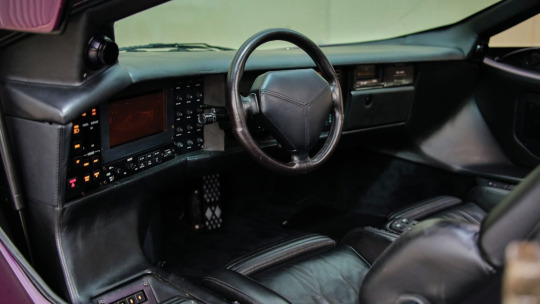
Back to the interior though. It was upholstered in premium leather and suede, with electrically adjustable leather Recaro seats and featured a premium air-conditioning system. Some driving amenities such as power steering were excluded. The seating position for the driver was made slightly towards the center for better drivability.
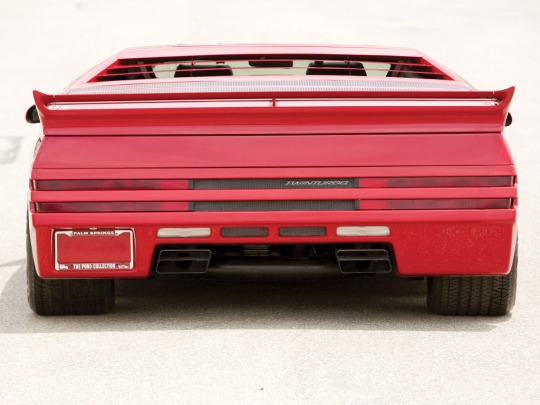
The rear of the W8 was dominated by lines, and the rear sightline... wasn’t very good, mainly because of that gigantic wing. The license plate holder is located on the left and apparently may have been an afterthought. “TWINTURBO” is seen gracing the back.
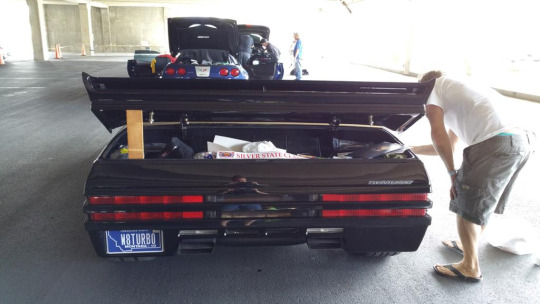
The car also features a trunk which is just behind the engine.
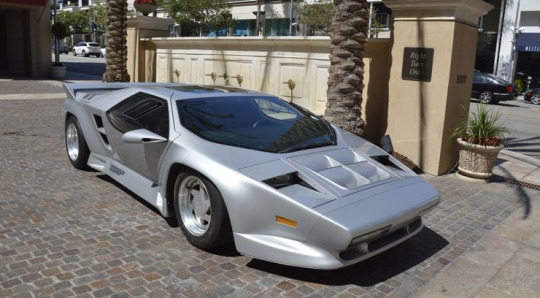
As for the front... oh, right, the headlamps. They’re not pop-up... they’re pop-DOWN.
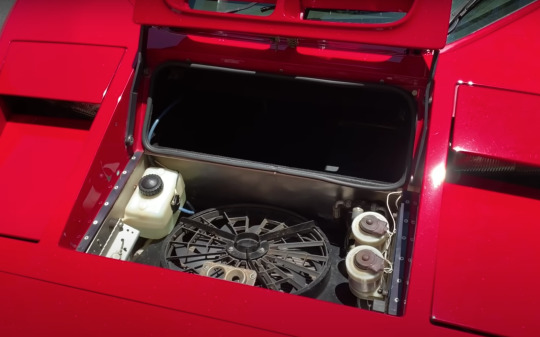
The car also has a storage cubby up front, although really, it wasn’t much.
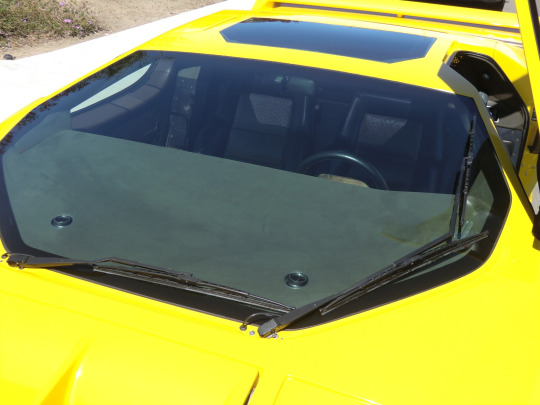
Also gracing the front were windshield wipers, as you would expect on practically every other car. However, there wasn’t just one, nor was there just two: there were THREE. A moonroof was also standard. It also had sliding side windows like a race car, as well as power-adjustable side mirrors.
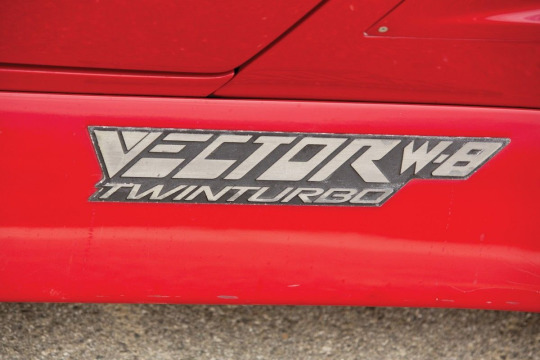
The logo on the side of the car was the only thing that really gave any indication as to what manufacturer it was.
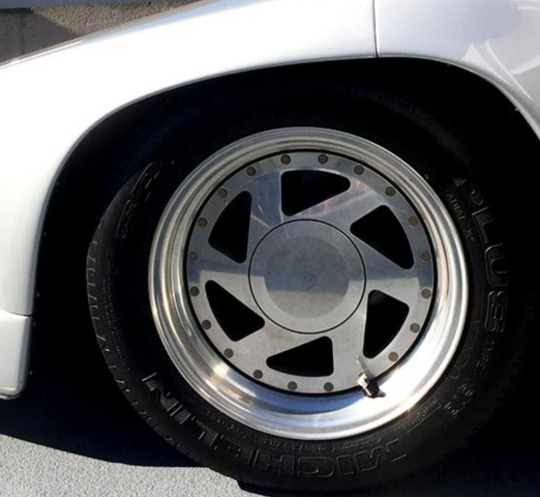
The car had unique six-spoke “turbine” wheels fitted to Michelin XGT Plus tires; the car used 255/45ZR-16s in the front and very, very strange 315/40ZR-16s in rear. These wheels were apparently of a bespoke design made to the driver’s specifications.
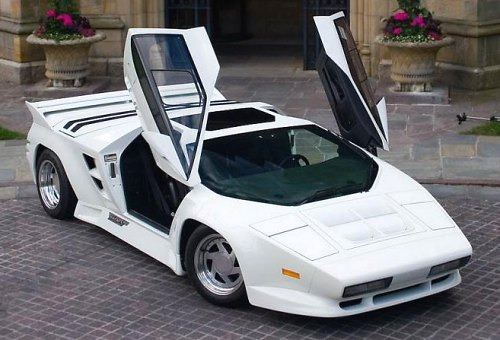
In terms of suspension, the W8 featured double A-arms up front and De Dion tube suspension at the rear, located by four trailing arms that stretched all the way forward to the firewall. The W8 used 13-inch vented disc brakes with Alcon aluminum 4-piston calipers.
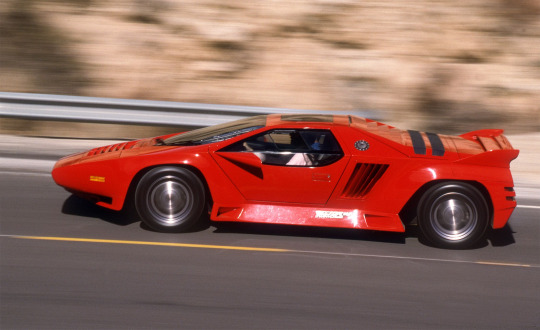
In terms of performance, the Vector shined; it claimed to be able to do 389 km/h (242 mph) and a 0-60 mph (0-97 km/h) time of 3.9 seconds. These numbers were never officially tested, but if true, these are very impressive numbers for the time. Okay, enough about the W8’s performance and figures; let’s get to the part you’ve been waiting for, the history.
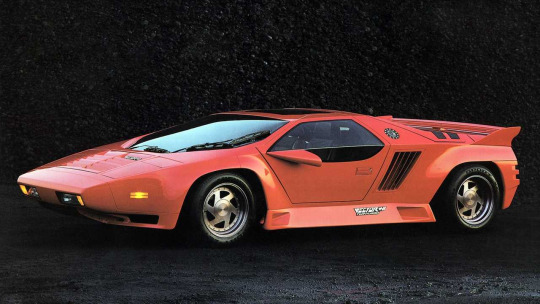
The W8 was first introduced in 1988 with a sticker price of about $185,000, priced within striking range of European competitors like the Lamborghini Diablo.
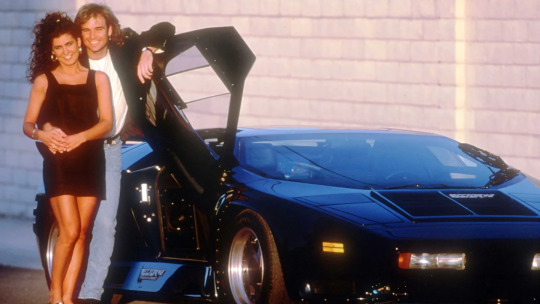
One high profile owner of a W8 was this man: Andre Agassi, although he ended up giving the car a bit of a bad rap. Agassi had insisted that his car be delivered before it was fully prepared; Vector agreed to this on the condition that Agassi not drive it and keep it in storage as the car was adjusted for the various emissions regulations in place. Agassi did not listen and drove it and ended up burning the rear carpeting due to an overly hot exhaust system; Agassi ended up requesting for a refund, which was ultimately granted. I’ll let you decide who’s at fault here.
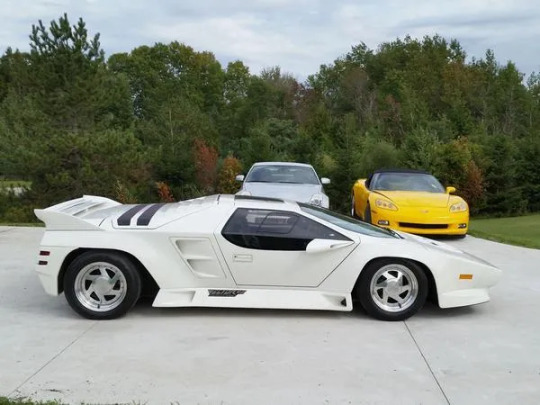
Car And Driver magazine also tested the W8, but couldn’t complete testing because all three cars they were sent somehow managed to break down in different ways, leading to even more bad publicity. However, not all is bad as Road and Track magazine waxed lyrical about the Vector, praising practically every aspect of the W8’s performance.
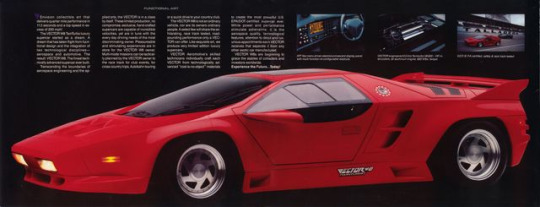
Vector was still going strong in 1993, selling W8s; however, Wiegert was already planning for a successor. That successor was to be known as the AWX-3, better known as the WX-3 (Hot Wheels also made a model of this one too), where the name stood for Avtech Wiegert eXperimental, 3rd generation.
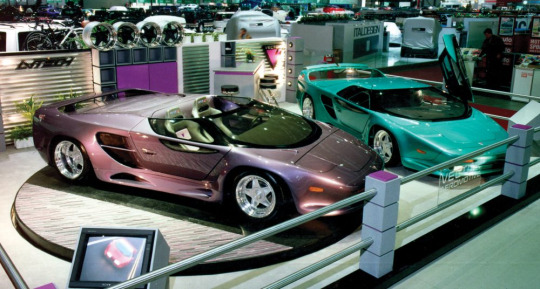
I’ll get into more details of the WX-3 in a later blog when I receive my WX-3 from the United States. Production of the W8 ultimately came to a halt in 1993 as Wiegert attempted to put the WX-3 into production; however, as the company was engaged in a hostile takeover by a Bermuda-based Indonesian company known as MegaTech, production never resumed and Vector entered a sharp decline. I’ll get into the rest of that history in another post.
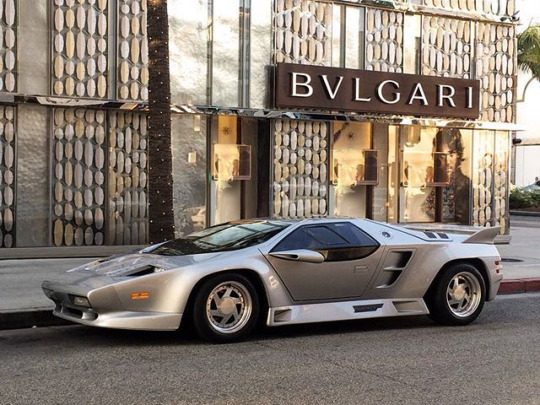
In total, twenty-two cars were produced; seventeen of which were customer cars and five of which were prototypes. The car is now worth over $1 million today; so, if for some reason you ever see a car that looks like this on the roads, drop everything and take as many pictures as you can, because you have just seen one of only twenty-two Vector W8s. Okay, now that we’ve gotten all that out of the way, let’s get to the reason why you’re here.
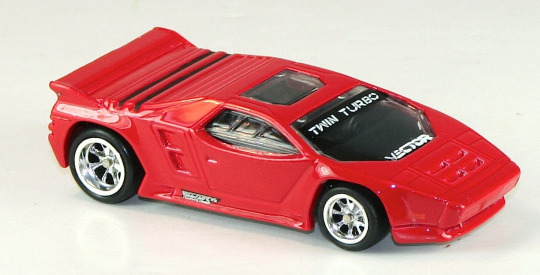
This... is the Hot Wheels version of the Vector W8. Named the Vector W8 Twinturbo in the Hot Wheels lineup, this casting was first introduced in the 2012 HW Boulevard series in the Ahead Of Its Time sub-series. This casting was designed by Manson Cheung.
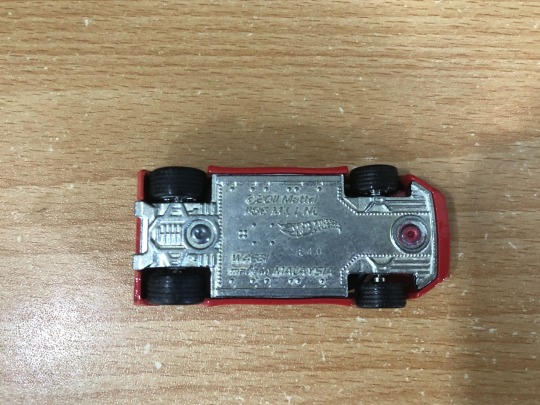
The base of the W8 features no mention of “Vector” anywhere; instead, just the SKU is displayed: W4831.
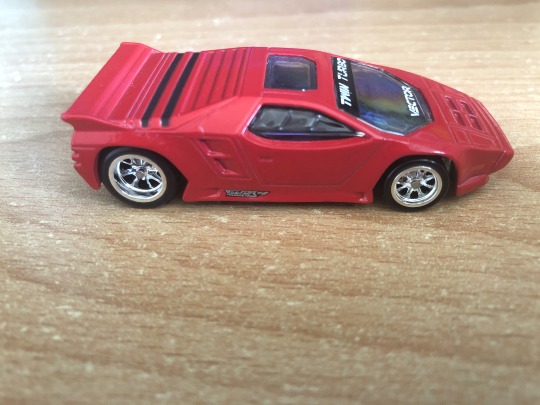
The sides feature the text “VECTOR W8 TWINTURBO” and nothing else. Black lines streak across the back to represent the engine cover.
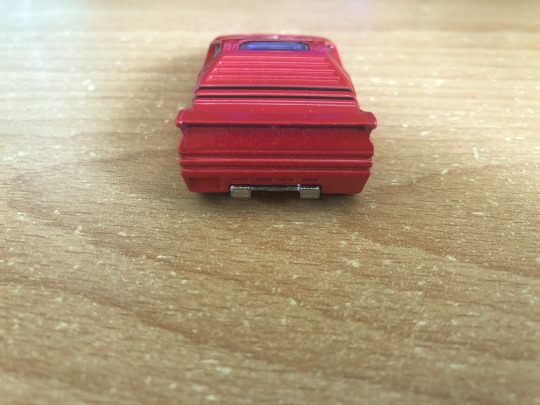
The rear fascia is nice, although my only real gripe is a lack of rear detail apart from the engine cover.
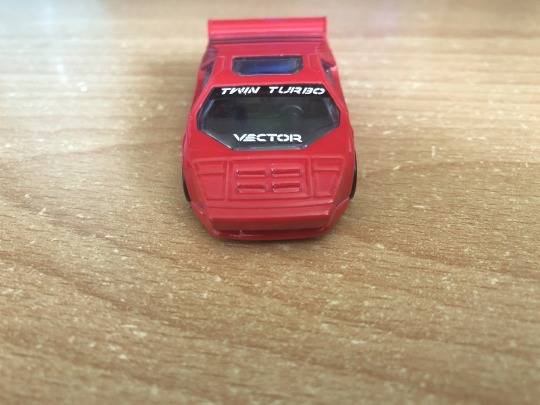
The front fascia is also well done, with “VECTOR” and “TWIN TURBO” on the windshield, although a lack of detail on the body apart from the side reflectors leaves me wanting more. The interior is painfully cramped so I can’t get any good photographs, but what I see are the Turbo-Hydramatic shift lever, the steering wheel, seats and molded pedals (those pedals are part of the base). The distinctive screen and CD changer are absent from the instrument panel, but of course, you can’t have everything.
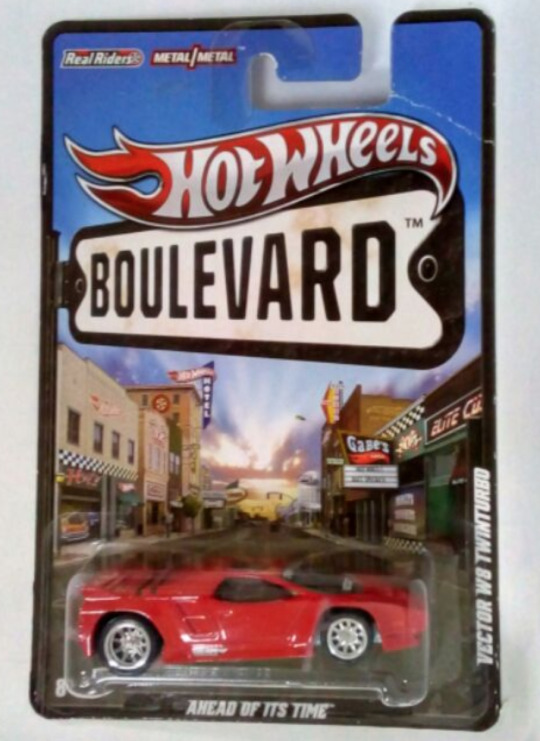
Folks, I believe you may have heard of the term “One-Hit Wonder” before. This is exactly an example of that; the W8 only saw one release in the HW Boulevard series and has not been seen since. As a result, prices for the Vector have been steadily climbing on eBay and I don’t see them going down for some time; why don’t you take a look for yourself?
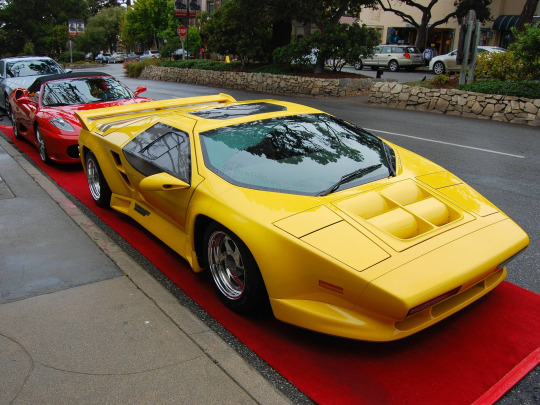
I hope this long writeup has given you a better idea on this turbocharged thrasher, and what is quite possibly my new favorite supercar from the ‘80s; step aside, Lamborghini Countach. As usual, I’d do something like this any day.
This article is the first in a three-part series I will call The Vector Saga. The series will document the W8, the WX-3, and the history of Vector Motors as a whole.
#hotwheels#CastingCall#vectorw8#vectorw8twinturbo#mansoncheung#thattimeforgot#vectoraeromotive#thevectorsaga
1 note
·
View note
Photo

That Time Forgot: Chevrolet Monte Carlo Intimidator
Time definitely forgot about this one, although it did preview the appearance of something to come. What’s this? You’ll find out in today’s installment of That Time Forgot.

This is the 1998 Chevrolet Monte Carlo Intimidator Concept. Introduced at the 1998 North American International Auto Show in Detroit by two surprise guests, Dale Earnhardt Sr. and the Tasmanian Devil, this was a racecar inspired vehicle taking cues from the Monte Carlos Chevrolet was racing in NASCAR at the time.

Described as road-legal by Chevrolet, but “only barely”, the car was equipped with a modified Buick 3800 Series II 3.8L V6 producing some 295 horsepower and 280 lbf⋅ft (380 Nm) of torque. The design of the car was done by Wayne Cherry.

The car featured all of the fixings you’d find in a racecar, especially a NASCAR one; low-slung front and rear airdams, decklid spoiler, racing guages, Recaro bucket seats, fire suppressant systems, five-point harnesses, steel safety cage, blah blah blah blah.

Ultimately, the Monte Carlo Intimidator was never produced and remained a concept; however, the design of the Intimidator served as inspiration for the next generation of the Chevrolet Monte Carlo. The name “Intimidator” would be reused for the Dale Earnhardt Signature Edition, a special edition of the 2002 Monte Carlo of which 3,333 were produced.

As far as I’m aware, the Intimidator Concept is currently in private ownership, having been auctioned off by Barrett-Jackson some time in 2017.
Now that we’ve gotten the history of the Intimidator Concept out of the way, let’s talk about the Hot Wheels casting.

Designed by Phil Riehlman, the Monte Carlo Intimidator was introduced in 1999 as a First Edition in the above color scheme. It has never been referred to by the name “Monte Carlo Intimidator”, instead always having been referred to as the “Monte Carlo Concept Car”; the Hi-Rakers release is an exception, but we’ll get to that later.

The base is made of metal and the casting is notably quite heavy; “MONTE CARLO CONCEPT CAR” can be seen on the base. However, interestingly, prototypes have a base marked with “MONTE CARLO INTIMIDATOR”; the “Intimidator” name was probably dropped on the model due to licensing issues.

The standard release of the Monte Carlo Intimidator saw a total of ten releases, last being released in 2007 as a Multi-Pack exclusive.

A modified version of the tooling was introduced in 2006. Featuring jacked up suspension and a plastic base, this Monte Carlo Concept is simply named the “Monte Carlo”. This version only saw two releases and was also last released in 2007 with an Easter Eggs-clusives release.

I hope you have learned a little bit more about this stock car-inspired road car and its small Hot Wheels counterparts, and as usual, I’d do it again any day.
3 notes
·
View notes
Photo

That Time Forgot: Hyundai NEOS
When you get asked: “What do you think is the most radical sports car design?” Some might say the Plymouth Prower. Others the Panther Kallista. I would say this thing. Let’s talk about it on today’s installment of That Time Forgot. And as a bonus, let’s also talk about its two successors.
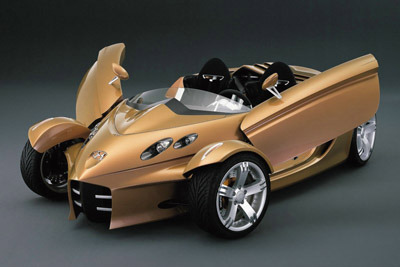
Introduced at the 2000 Paris Motor Show, the NEOS set out to prove that Hyundai could build technologically interesting and advanced cars.

Powered by Hyundai’s 2.0L Beta engine, it produced 250 horsepower and featured radical styling reminiscent of that of the Prowler and the Light Car Company Rocket.

A 6-speed continuous semi-automatic transmission was used. NEOS stood for “New Evolution Open Sportscar”, at least in this case. The car had swan doors which could be unlocked and opened using a card keyfob.
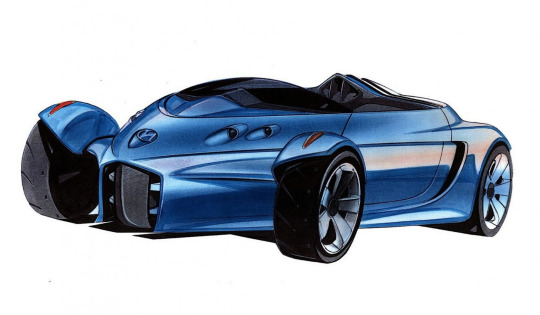
Work on the NEOS began in 1998, led by the HMC Japan Technology Research Center. Work took a total of 28 months. The body of the NEOS was made mainly of carbon fiber, aluminum and plastic.

Despite the promising figures, the car’s radical styling ensured that the NEOS would never come to be. The name would be recycled for another two concept cars.
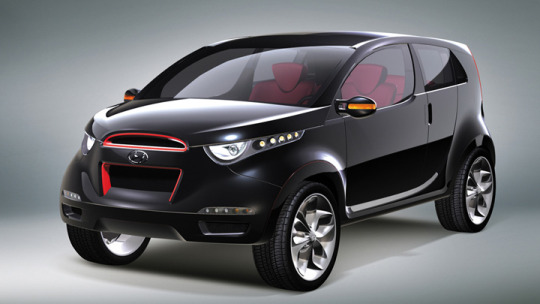
In 2003, the NEOS-II was introduced. This was a mini-MPV with an “urban horse-trekking” motif (yeah, I dunno).
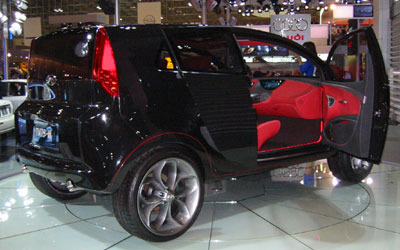
Introduced at the 2003 Tokyo Motor Show, the NEOS-II offered unparalleled space compared to other MPVs of the time, prioritizing frontal space. It also featured a glass roof and all the other fixings. As usual, the car never came to be, but the name was subsequently reused.

This was the NEOS-III. First revealed at the 2005 Tokyo Motor Show, the 4.6L V8-powered NEOS-III featured a clinically-styled body with a high beltline and a short greenhouse. The front and rear may not have been the most attractive however.
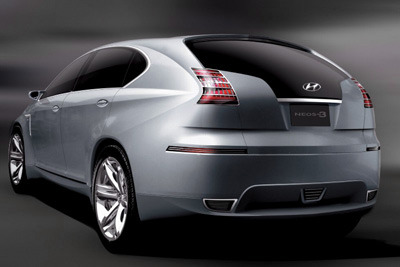
Okay, now that we’ve gotten the history of the NEOS and the related concepts out of the way, let’s talk about the Hot Wheels casting.
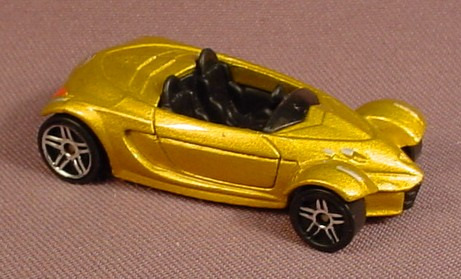
The Hyundai NEOS was first introduced in 2002 as a First Edition. Of note is that no releases ever refer to the NEOS as the NEOS; instead, it is referred to as the Hyundai Spyder Concept. This casting was designed by Mark Jones, who has designed many castings since he joined the Hot Wheels Dream Team in 1993.

As seen on the base, it is simply marked “HYUNDAI SPYDER CONCEPT” with copyright information on the base. There is no mention of the word “NEOS” anywhere on this car. As for why that is, I suppose someone already had some copyright with the word “Neos” going on, so Hot Wheels couldn’t use it; I don’t think it was the car’s name at any point.
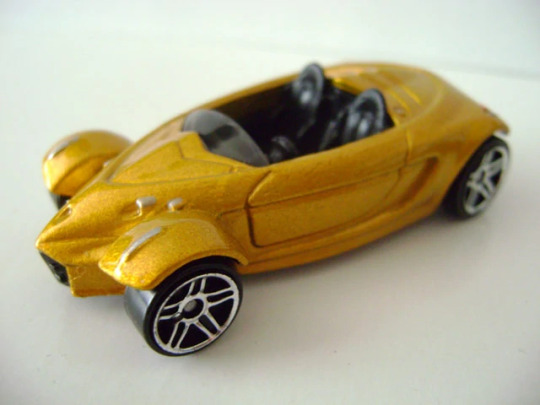
This casting received only four releases. As another added bonus, let’s show all of them.
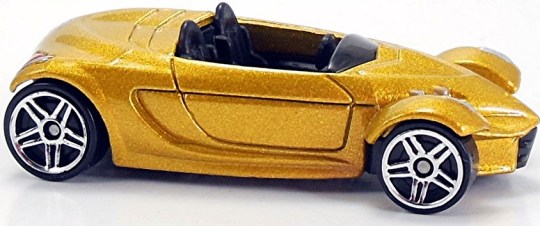
2002 First Editions.
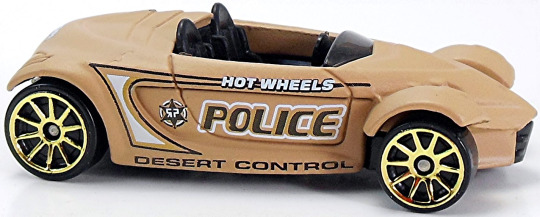
2004 Roll Patrol Series.

2010 Mystery Models.

2012 Multipack Exclusive.

I hope this has given you a better idea on this strange Hyundai’s history, its successors, and its small Hot Wheels counterpart, and of course, I’ll do it again any day.
- Grunty
1 note
·
View note
Photo
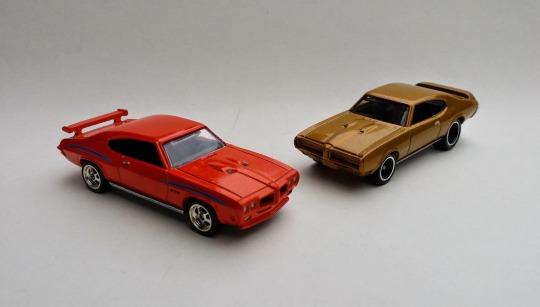
Visiting a Collection
In the near future, I intend to visit a collection of my friend again. He runs the blog Hot Wheels And Such... which you can read here. I have already visited him twice, but I want to put a spin on my next visit; to document this stuff.
I intend to do an IGTV Live video when I visit him next, analyzing some old castings most people would have little opportunity to touch, let alone see. I have compiled a list of the cars I’ll try to see in his collection, which you can view by clicking here.
Of course, I’m not likely to view all the cars in one visit, however, I hope I can view most of the cars in this list. Please note that even though this list covers cars from 1968 to 2013, I will predominantly be examining cars from 1968 to 1995. I will also document the escapades on my Tumblr as well. More details on the visit will come in the near future.
Stay tuned for more, stay hungry for knowledge and stay excited, and of course, I’d do it again any day.
- Grunty
0 notes
Photo

Grunty’s Goodbye: ‘83 Custom Corvette Convertible
What do you do when possibly a fan favorite retires? Well, you may be a little disappointed, but you say “goodbye” regardless. This is exactly what happens in this scenario. On today’s installment of Grunty’s Goodbye, we take a look back at the ‘83 Custom Corvette Convertible... and talk about it.

Designed by Jerry Palmer under Dave McLellan’s supervision, the C4 Corvette was produced from 1983 to 1996. Representing a clean break from the C3 designed by Zora Arkus-Duntov, the bumpers were made from molding plastics and was also the first Corvette to have a glass hatchback. Engines from the L89 to the LT1 V8 were available, all in 350 ci (5.7L). The last C4 Corvette rolled off the production line on 20 June 1996.
Now that we’ve gotten all that out of the way let’s talk about the reason why you’re here; the history of the Custom Corvette Convertible.

The Custom Corvette Convertible was originally introduced in 1989 in this paintscheme in the Speed Fleet series, along such cars like the ‘80s Corvette and Ferrari F40. Designed by Larry Wood, this casting depicted a C4 Corvette Convertible, but with flared fenders and a lower front bumper.

An interesting detail is the license plate; it reads “ZR-1”.

The base reads “83’ CUSTOM CORVETTE” (sic); it appears to have been changed to “CORVETTE STINGRAY” at some point.

Another base variation exists, where “CUSTOM CORVETTE” is written instead.

Other notable releases included the California Customs series with the extremely unique TWs (Turbo Wheels) only used for this series...

The car from the Revealers series...

From the Corvette 5-Pack...

A cereal promo...

And even in gold chrome to celebrate the one billionth Hot Wheels car. However, all good things must come to an end, and the same applies in this case, because in 1999, this casting was thrown into the Final Run Series.

The Final Run Series started in 1999 and acted as what I would consider a very glorified funeral for a casting; Hot Wheels would give these cars special tires and paint, in exchange for vowing to never produce them again by cutting their toolings in half. The Corvette was unfortunately one of the castings to fall victim to the Final Run Series, and even though it was one of the more popular castings at the time, it was still retired regardless. As the first batch of cars to be Final Run, having been introduced in the 1999 series, the Wildcat will never be seen again in the Hot Wheels lineup unless a new tool and die is created for it, which I believe is highly unlikely. The Final Run Series itself has been on hiatus since 2006. In total, the Custom Corvette Convertible had forty releases.

Fitted with a highly detailed rear and a Pro Circuit 6-spokes, this was a fine sendoff for a casting that would never be seen again... except it was.

Because sometime in 2000, a mysterious release of the Custom Corvette Convertible appeared in Mexico; this release has had no context whatsoever and was essentially identical to the 1998 Tropicool release, sans tampos.

Any wording on the card was also mysteriously absent.

This variant is still being researched on. And here is the original Tropicool version just for comparison. That mysterious release was the true last release of the Custom Corvette Convertible.

Because of its flat sides with loads of space, the Corvette Convertible was the recipient of lots of graphics. It’s a shame that this casting had to be retired, because I kind of want a C4 Corvette Convertible to return to the mainline.

I hope this has given you a better idea of the history of the Hot Wheels Custom Corvette Convertible. As usual, I’d do it again any day.
- Grunty
2 notes
·
View notes
Photo

That Time Forgot: Honda HSC
A supposed successor to the original NSX, perhaps? Probably so, but it didn’t make the cut. Let’s travel back in time and talk about this car, in today’s installment of That Time Forgot.

Unveiled at the 2003 Tokyo Motor Show, the HSC was a futuristic and sleek sports car concept for its time. The car also received a feature at the Geneva Motor Show and was also branded as an Acura for the 2004 North American International Auto Show. The name stood for “Honda Sports Concept” or “High-performance Sports Car” depending on who you asked.

Powered by an i-VTEC 3.5L naturally-aspirated V6 producing over 300 horsepower, the HSC was made of carbon fiber placed on an aluminum frame. A 6-speed paddle-shift gearbox was standard. The exhaust pipes were made of aluminum and the car had swan doors.

Immediately after it was released, speculations arose saying that the car was meant to be a successor to the NSX, but Honda never confirmed this. After its tour of the auto show circuit, development on the HSC went silent; it was only in 2005 when the HSC was confirmed to be purely a concept car, with no plans for production. It was subsequently followed by the Acura Advanced Sports Car Concept (or ASCC, shown below), which was in turn followed up by the Acura NSX concept which eventually came the next-generation Honda (or Acura, depending on where you live) NSX.

Okay, now that we’ve gotten all that history out of the way, let’s talk about the reason why you’re here: the history of its Hot Wheels counterpart.
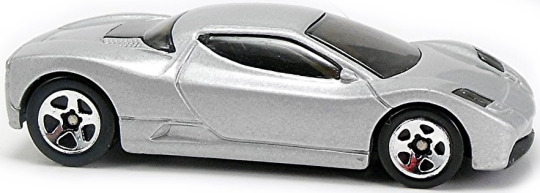
Designed by Mark Jones, the Honda HSC (Hot Wheels calls it the Acura HSC Concept) was introduced in 2005 as a First Edition. It was first released in the above silver color scheme, replicating that of the real HSC. A notable feature of the HSC is the plastic insert headlamps, something that not a lot of castings have; the headlamps are part of the window piece.

There was a version of the HSC featured with Faster Than Ever wheels, with nickel plated axles for less friction. Faster Than Ever HSCs are apparently very, very fast even though the casting is notably very light.

This casting features a plastic base with the distinctive cut-out Hot Wheels logo which graced cars from 2005 to 2006; this logo was designed and patented by ex-Hot Wheels designer Nathan Proch. Due to cost cutting, this logo has since been removed. The base is made of plastic; the silver Hot Wheels logo is part of the interior piece.

This casting received a total of nine releases and was last seen in 2014 as a Mystery Model in the above colorscheme.
Now I’d want this casting to return to the lineup, although I have other castings I want to return more than this. Despite this, I hope you now know a little bit more about Honda’s high-performance sports concept car, and as usual, I’d do it again any day.
- Grunty
1 note
·
View note
Photo
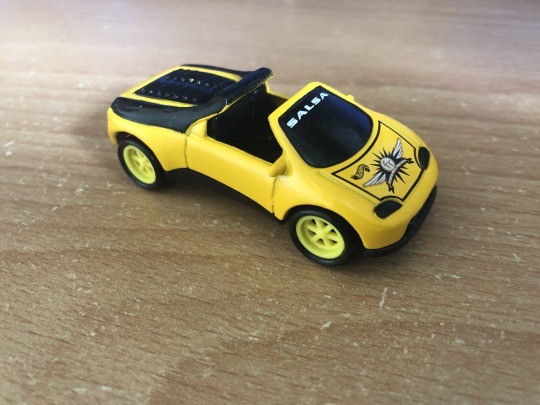
That Time Forgot: Pontiac Salsa
A car named after a sauce? Cute. But as usual, this was an actual concept car designed by GM. Want to know more? Let’s talk about it in today’s installment of That Time Forgot.
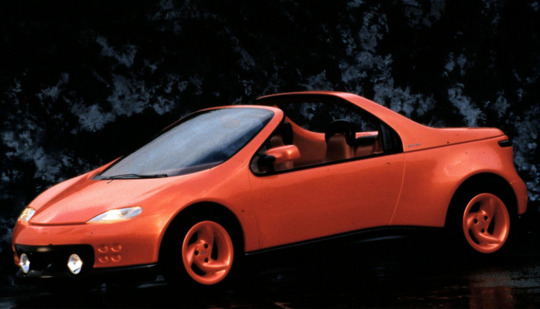
Conceived by GM’s Advanced Concept Center based in California, the Salsa was meant to be “an athletic small vehicle with modular parts”. We’ll get to that part later. The car was introduced at the 1992 Chicago Motor Show.

This small two-seat convertible with flowing three-spoke wheels was engineered to be as modular of a car as possible. In its standard configuration, the car was presented as shown above; however, it has a removable top and a removable rear end piece situated above the rollbar.

One module of the Salsa could be switched in to turn the car into a five-seat convertible.

The rear seats could then be folded forward to make this car a small pickup.

Another module was available which could turn the car into a small panel van.

Yet another module was available which could turn the car into a five-seat hatchback.

The interior of the car looked rather basic for the time, with a simple analog dashboard and a manual transmission. Any details about the powertrain or underpinnings of the car are unknown.

Advertisements involving the Salsa touted its modularity, but ultimately, the Salsa never came to be. Two cars were produced; presumably they are sitting amongst a sea of other cars at the GM Heritage Center, while the concept of modularity lives on today, predominantly in SUVs. The Salsa has been seen out of the collection a few times since, but it seems to have its unique three-spoke rims changed out.
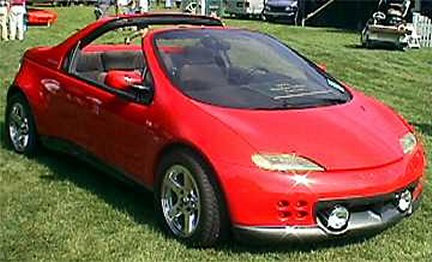
Now that we’ve gotten all the history of this thing out of the way, let’s talk about the reason why you’re here: the Hot Wheels version of the Salsa.
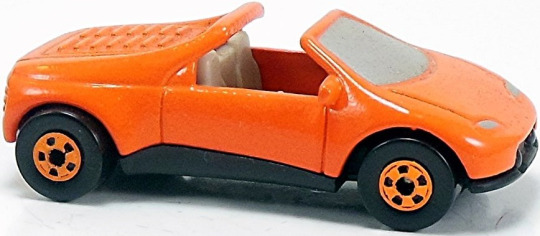
This casting was introduced in 1993 in the Demolition Man series, alongside eight other cars that appeared in the movie: these were the Oldsmobile Aurora, Olds 442 W-30, GM Ultralite, GM Lean Machine, Corvette Stingray III, Pontiac Banshee, Buick Wildcat and the Chevrolet ACC Camaro (’93 Camaro), intended to represent the Chevrolet California IROC Camaro Concept. The designer of this casting is not known with any certainty, although I suspect it was done by Larry Wood.
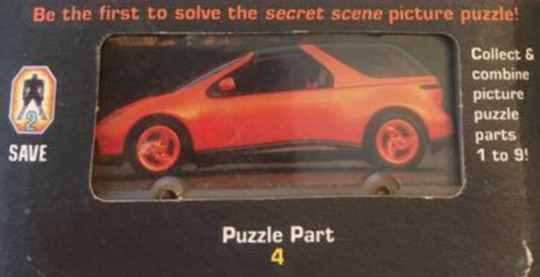
Something rather interesting is that despite the Salsa being in this series, the car apparently is not featured in the movie, unlike the other eight cars.

While a nice little casting, I have two minor gripes about the Salsa; these involve the windscreen and the rear. First off, the windscreen is another slab of metal which can’t be seen through, but I guess whatever works works.

The second gripe I have is with the rear, with the taillamp position resembling nothing like the real thing, but maybe this was something to do with a much earlier prototype.

I couldn’t find any colored images of the rear of the Salsa convertible, so this one will have to do. Compare it to the rear of the Hot Wheels model and you’ll see what I mean.
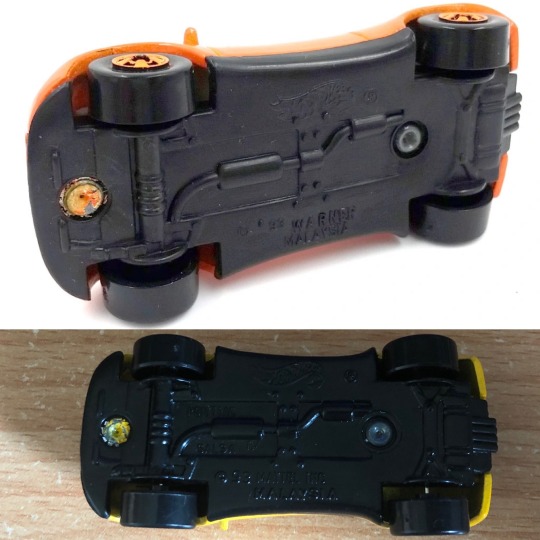
This casting has a plastic base, although it seems at least one of the versions has a metal base. Early versions will say "'93 WARNER” instead of “93 MATTEL INC” and “PONTIAC SALSA”; I presume the license with Warner Bros. had expired, so they just scrubbed off the Warner licensing information and put their own on.

The casting itself did not enjoy the frequent releases its other castmates had in the Demolition Man Series, but ultimately this casting was doomed in 1999 for one reason, and one reason only: the Final Run Series.

The Final Run Series started in 1999 and acted as what I would consider a very glorified funeral for a casting; Hot Wheels would give these cars special tires and paint, in exchange for vowing to never produce them again by cutting their toolings in half. The Salsa was unfortunately one of the castings to fall victim to the Final Run Series, and although it might not have been one of the more popular castings to retire that year, it was still retired regardless. As the first batch of cars to be Final Run, having been introduced in the 1999 series, the Salsa will never be seen again in the Hot Wheels lineup unless a new tool and die is created for it, which I believe is highly unlikely. The Final Run Series itself has been on hiatus since 2006. In total, the Salsa had nine releases.

I hope this post has given you a better idea on the history of this small but modular American convertible, and the history of its small Hot Wheels counterpart. As usual, I’d write something like this any day.
2 notes
·
View notes
Photo

That Time Forgot: Buick Wildcat
Okay, who would have thought that there was a possibility for you to say “Buick” and “McLaren” in the same sentence? Well, this is quite possibly the only time you can do that. Today, let’s talk a bit about the nameplate’s history... as well as the casting, in today’s installment of That Time Forgot.

Before we talk about the Wildcat in question, let’s go back in time to 1953, when the first Wildcat was introduced.
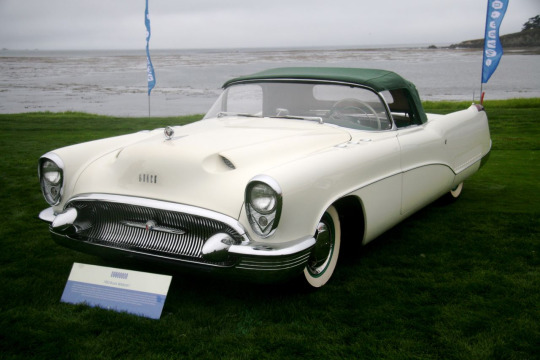
Enter the 1953 Buick Wildcat, internally known as the Wildcat I. Designed under the direction of GM head of design Harley Earl, the Wildcat was designed for the sole purpose to see if it was feasible to put a fiberglass bodyshell on top of a car. The car was powered by a 322 ci (5.3L) Nailhead V8 producing 188 horsepower. With a wraparound windshield with a 60° slope, the Wildcat successfully influenced the design for Buick’s 1954 cars. After its tour of the auto show circuit complete, the Wildcat was sentenced to the scrapper, but was saved and is now in the hands of Joe Bortz.
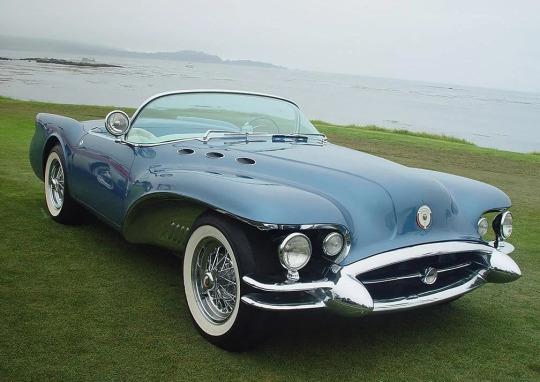
1954 came another Wildcat, internally dubbed the Wildcat II. Also designed under the direction of Earl, this Wildcat was a styling exercise, combining modern elements with classic styling from years gone past; it was because of this that Buick billed the Wildcat as an “American Adventure in Tomorrow's Design”. The car was powered by a 322 ci (5.3L) Buick Nailhead V8, producing 220 horsepower, and was specifically made to be fully functional (like the Wildcat I) in the event that GM chief Harlow Curtice wanted one for his own.
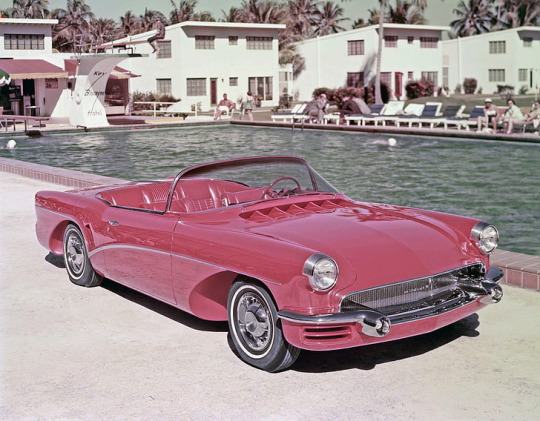
In 1955, another Wildcat came, internally designated... guess what. Also designed by Earl, the Wildcat III was probably the most conservative of the three 1950s Wildcat concepts, although it was quite a bit larger and longer than the previous two Wildcats. Powered by the same 322 ci (5.3L) Buick Nailhead V8 as the previous two Wildcats, the Wildcat III’s V8 was boosted to 280 horsepower with the help of a quad-carburetor setup. Nicknamed the “Toy Convertible”, the Wildcat featured a Twin Turbine Dynaflow 2-speed automatic transmission and featured rear seats, allowing for four passengers. After its tour of the auto show circuit was over, the Wildcat III was ordered to be junked; however, nobody really knows for sure what happened to it.
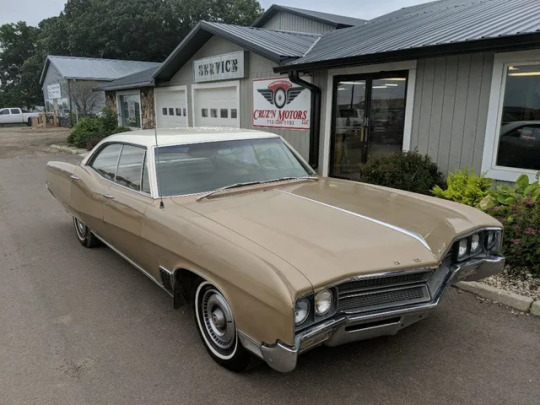
The Wildcat name was subsequently used for a number of full-sized automobiles produced by Buick from 1963 to 1970, but that’s not what you’re here for. Instead, you’re here for this: the 1985 Buick Wildcat.
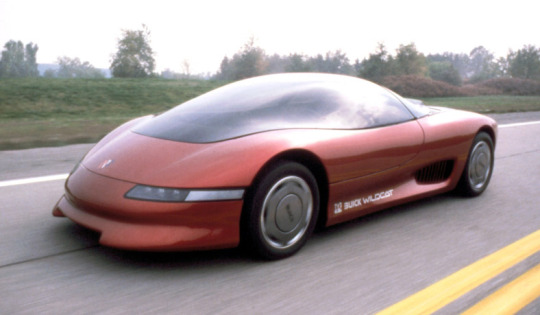
Some fifteen or so years after production of the Wildcat had halted, Buick came out with another Wildcat. This was a futuristic sports car featuring swoopy lines and a canopy which tilted forward for entrance and exit.
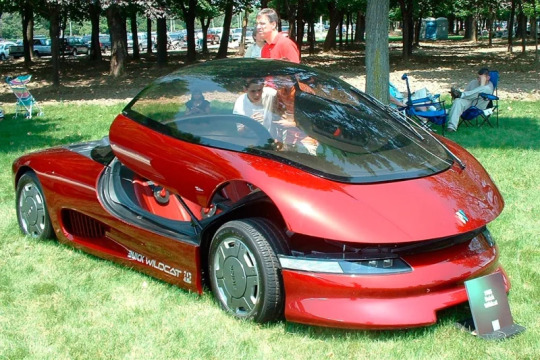
Two prototypes were produced; one non-running one that was showcased at SEMA in 1985, and one fully-functional prototype. The running prototype was powered by an experimental 3.8L Buick V6 built by McLaren Engines (no relation to the British car company).
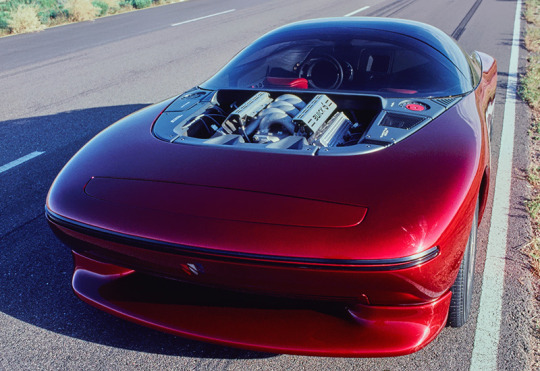
This exposed engine generated some 360 horsepower at 7,000 rpm and 398 lbf⋅ft (540 Nm) of torque. However, given the hardware this thing ran on, performance for the Wildcat... wasn’t that spectacular, with 0-60 mph (0-96 km/h) taking 8.6 seconds. The top speed for the Wildcat was actually electronically restricted to 70 mph (112 km/h); top speed figures for an unrestricted Wildcat remain unknown.

The body was made of fiberglass and carbon fiber, and the car featured a 4-speed transmission which could be manually shifted.
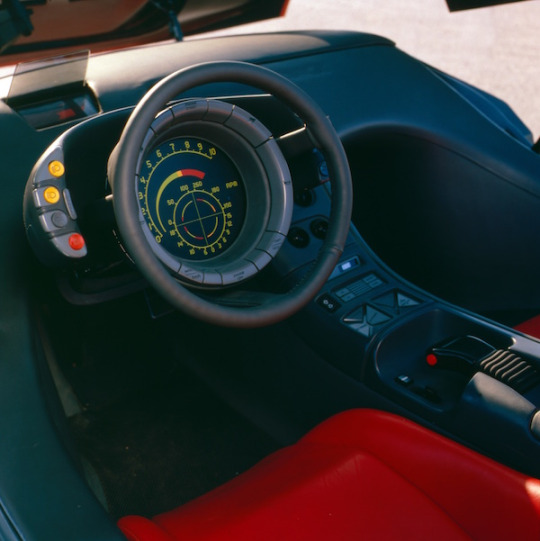
The interior of the Wildcat was highly advanced for its time, with a screen in the middle of the steering wheel display information such as G-force, torque, oil pressure and a compass. To add to that, a heads-up display was also added, displaying speed, mileage and gear selection on the glass canopy.
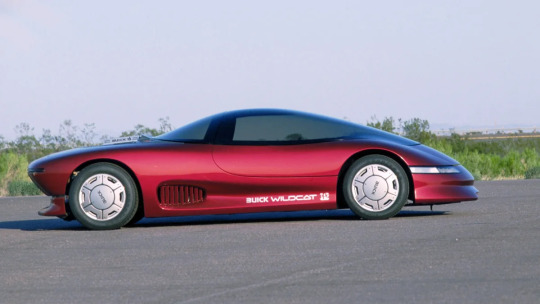
Despite all the high-tech features, all the Wildcats remained prototypes, and they now sit among a sea of other cars at the GM Heritage Center, with the exception of the Wildcat III (which isn’t there).

The Wildcat got its big break in the film industry when it appeared briefly in a scene in the 1993 film Demolition Man alongside some seventeen other GM concepts.
Okay, now that we’ve gotten all of this info out of the way, let’s get to the real reason why you’re here.

This casting was introduced in 1993 in the Demolition Man series, alongside eight other cars that appeared in the movie: these were the Oldsmobile Aurora, Olds 442 W-30, GM Ultralite, GM Lean Machine, Corvette Stingray III, Pontiac Salsa, Pontiac Banshee and the Chevrolet ACC Camaro (’93 Camaro), intended to represent the Chevrolet California IROC Camaro Concept. This casting was designed by Larry Wood. Something notable about the Wildcat was the “canopy” piece, which was simply the car’s body painted black.
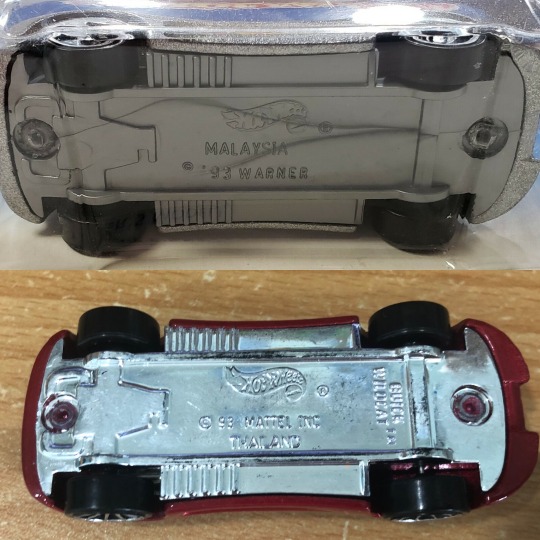
This casting has a metal base and plastic body. Early versions will say "'93 WARNER” instead of “'93 MATTEL INC” and “BUICK WILDCAT”; I presume the license with Warner Bros. had expired, so they just scrubbed off the Warner licensing information and put their own on.

The Wildcat enjoyed the privilege of being released quite often when it was in the lineup, but ultimately this casting was doomed in 2005 for one reason, and one reason only: the Final Run Series.

The Final Run Series started in 1999 and acted as what I would consider a very glorified funeral for a casting; Hot Wheels would give these cars special tires and paint, in exchange for vowing to never produce them again by cutting their toolings in half. The Wildcat was unfortunately one of the castings to fall victim to the Final Run Series, and although it might not have been one of the more popular castings to retire that year, it was still retired regardless. As the final batch of cars to be Final Run, having been introduced in the 2005 series, the Wildcat will never be seen again in the Hot Wheels lineup unless a new tool and die is created for it, which I believe is highly unlikely. The Final Run Series itself has been on hiatus since 2006. In total, the Wildcat had eighteen releases.
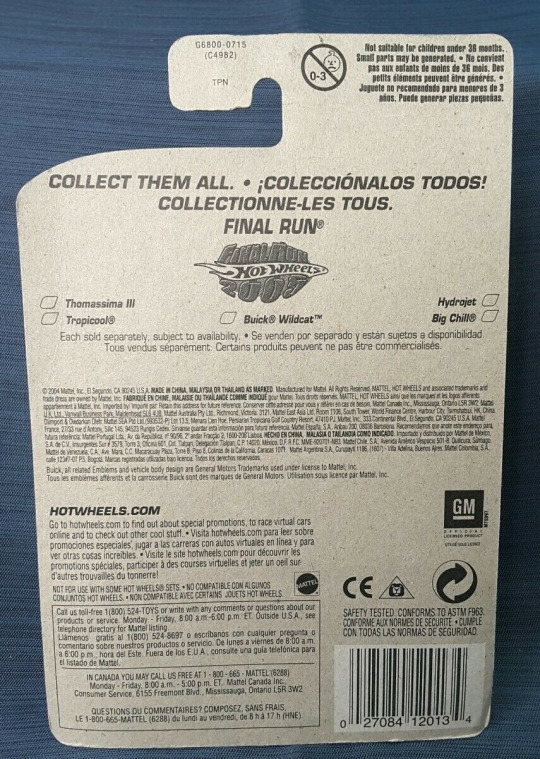
Of note is that the image above says that Tropicool (Good Humor Truck) is one of the castings that was intended to be Final Run; the actual casting that was Final Run was the Treadator, while Tropicool remains in the lineup to this day.

Always on the receiving end of very loud decals due to the large amount of space on the car, perfect for tampos, the Wildcat will be dearly missed (by me, at least) in the Hot Wheels lineup, and I wouldn’t mind seeing a modern recreation of the Wildcat return to the Hot Wheels lineup as a premium piece.
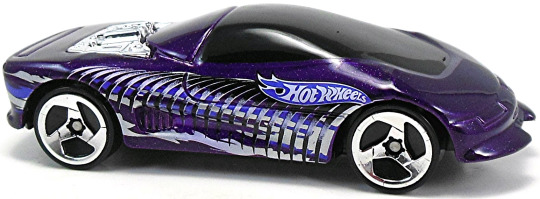
I hope this post has given you a better idea on the history of this futuristic American supercar, and the history of its small Hot Wheels counterpart. As usual, I’d write something like this any day.
1 note
·
View note
Photo

That Time Forgot: Pontiac Banshee
Gosh, I honestly want to rename this segment to “Ahead Of Its Time”, but I’m keeping the That Time Forgot moniker to keep it consistent with the other few posts I’ve been doing. But anyway, back to our point.
Concept cars have cool names, like Rageous, Wildcat and UltraLite. But I feel this one is probably the coolest of them all. Today, I’ll take you back in time to discuss about what, in my opinion, is one of the coolest concept cars of the ‘80s, both in appearance and name.

The Pontiac Banshee nameplate has been used for a line of concept cars designed by General Motors, the nameplate having been used since 1964. Before we talk about this Banshee, let’s take a trip back to 1964, with the 1964 Banshee I.

The Banshee was Pontiac’s newest concept car in 1964, dubbed the XP-833 internally. This was a small sports car with a sweeping front end and short rear deck, conceived by head of Pontiac John DeLorean (yes, that DeLorean). The appearance is highly reminiscent of the third-generation Chevrolet Corvettes. A few were built, but only two were functional prototypes; these were a silver coupe with an inline-6 and a white convertible with a V8.

Described by DeLorean as the “Mustang Killer”, the Banshee was rumored to be slated for production; however, the extremely high performance of the Banshee ultimately did not sit well with the higher-ups at GM, who thought the performance of the Banshee would ultimately prove as a threat to the Corvette and the Banshee was ultimately canned as a result.

In 1968, a new version of the Banshee was made, internally known as the Banshee II. This was essentially a Pontiac Firebird with a new fiberglass body shell sitting on Firebird body panels and a near-stock Firebird interior.

Originally red, this wedge-shaped car was given a new white paintjob with red accents and a hood decal in 1969. It was powered by a 400 ci (6.6L) Pontiac V8.

The third Banshee, internally known as the Banshee III, was introduced in 1974 and painted in a chrome red. The car itself was based on the Firebird with an appearance influencing that of the later Trans Ams. It featured covered headlamps blended with a streamlined hood for better aerodynamics. The triple headlamps had three modes: low, freeway and high-beam. The car had a soft face bumper system with body-colored urethane over an energy-absorbing foam base.

The Banshee III originally had four slit-type taillamps, but these were changed to twenty “high tech round hole” taillamps in 1976. The car was powered by a 455 ci (7.5L) Super Duty V8. And now, we move on to quite possibly the most iconic one of the bunch.

The newest version of the Banshee, also known as the Banshee IV, was also one of the most futuristic sports cars of the period. Powered by an experimental SOHC V8 with 230 horsepower, the car had sleek lines and a futuristic appearance.

With buttons everywhere on the steering wheel along with a heads-up display projected information about speed and other things. The car also featured dual adjustable rear wheels and appears to be fully functional. The car was intended to preview the exterior design for new cars to come, which it did; the Banshee helped to preview the design of the next-generation Pontiac Firebird and by extension the next-generation Chevrolet Camaro.

The Banshee got its big break on the big screen when it appeared in Back To The Future Part II, although very briefly.

The Banshee also appeared very briefly in the 1993 movie Demolition Man; here, it can be seen next to the Corvette Stingray III and an Oldsmobile Aurora. The car is currently located at the GM Heritage Center, along with the Banshee II and III; both Banshee Is are in the hands of private owners.

Okay, now that we’ve gotten all the history out of the way, let’s get to the reason why you’re here: the history of the Hot Wheels casting.

The Banshee was first introduced in 1989 as part of the Speed Fleet series. One notable difference between the real-life Banshee and the model Banshee is the non-covered rear fender flare. This casting was designed by Larry Wood.

The base is metal and features few markings apart from the logo and copyright information. I can honestly see people not being able to identify this car, but this was at a time where little other information other than copyright and the Hot Wheels logo was placed on the base; this lasted from about the mid-’80s to the mid-to-late-’90s, at which point it was presumably mandated to put the name of the casting on the base unless it couldn’t fit.

Even on modern releases it appears that the name of the casting is not printed. Something interesting I noticed was that the base graphics are actually identical to that of the Corvette Stingray III. Of note is that the interior piece of the car makes up a part of the distinctive “triangle” front fascia of the Banshee.

This casting received a total of twenty-seven releases, and was last seen in the 2011 Hot Ones series with retro-style decals and pastel colors.

In my honest opinion, the Banshee would be a perfect addition to a Hot Wheels series showcasing forgotten concept cars like these from the ‘80s to aid these concept cars on their road to getting remembered. I hope you have gotten a better idea about the history of the Banshee and the cars that preceded it, and like I always say, I’d do it again any day.
- Grunty
3 notes
·
View notes
Photo

That Time Forgot: Corvette Stingray III
Wait, you’ve never heard of this Corvette? Well, that’s honestly to be expected since this car is practically forgotten among most circles... I think. So why don’t you grab a drink and sit down with me as I tell you the story of this Corvette concept. (and no, this isn’t the CERV)

The Corvette Stingray III was one of three entrants into a GM design contest staged by Chuck Jordan, GM’s vice-president of design at the time, in 1992. He had asked three studios to pen down their ideas for what would become the C5 Corvette... which would end up looking nothing like this. But back to our story.

Jordan’s favorite was what would be christened the Corvette Stingray III, as penned down by Chevrolet’s Advanced Concept Center based in California, led by John Schinella. It explored a radical rethink of the Corvette’s proportions, featuring a stretched wheelbase and being wider than the C4, along with the windshield pulled far forward and the tail bobbed. The fact that it was designed in California gave it the nickname of the California Corvette Concept. The car would be showcased at the 1992 North American International Auto Show in Detroit.

The car featured active suspension using four optical sensors to shine beams of light down on the undercarriage to adjust it automatically. Four-wheel steering was also featured as standard. The car has fixed seats, which may seem like a problem to some, although the low side sills and an instrument panel which articulates up when the doors open aids the driver or passenger in getting into the car and allowing for better knee clearance. The car also had an adjustable steering wheel and pedals to make up for the fixed seats.

The seat backs were raked to nearly a recumbent position, and the car featured a rather basic steering wheel; what was behind that steering wheel was far from basic, however, with an analog and digital dashboard.

Powering the car originally was a “high-output” V6 of an unknown capacity. When the car was showcased at the NAIAS, it wowed the crowds, but the Detroit-based design firms weren’t as pleased, especially when it came to the V6, which they felt was a step backwards. The engine may have been replaced by a 300 horsepower GM 5.7L LT1 V8 at some point, likely around the time the NAIAS rolled around.

The car was actually very close to seeing the light of day on the production side, although the $300,000 price tag for the thing really did not help the car’s case, even for a Chevrolet that could purportedly do 225 mph (362 km/h). As such, production plans were canned and the Corvette Stingray III remained a prototype. It now sits among a whole host of other GM cars at the GM Heritage Center, and various elements of all three Corvette designs were used in the final design of the C5 Corvette, which received rather lukewarm reception.

After its auto show debut in Detroit in 1992, the Corvette Stingray III got its big break on the big screen, where it made its movie debut in a car chase scene in the 1993 movie Demolition Man; the Stingray III only appeared very briefly in the movie as one of the “background cars”. The car was featured alongside some seventeen other General Motors concept vehicles lent by GM to the production crew for the film. After filming ended the car returned to the GM Heritage Center.
Okay, now that we’ve got all the history out of the way, let’s talk about the reason why you’re here; the history of the Hot Wheels version of the Stingray III.

This casting was introduced in 1993 in the Demolition Man series, alongside eight other cars that appeared in the movie: these were the Oldsmobile Aurora, Olds 442 W-30, GM Ultralite, GM Lean Machine, Pontiac Salsa, Pontiac Banshee, Buick Wildcat and the Chevrolet ACC Camaro (’93 Camaro), intended to represent the Chevrolet California IROC Camaro Concept. The designer of this casting is not known with any certainty, although I suspect it was done by Larry Wood.

This casting has a plastic base, although it seems at least one of the versions has a metal base. Early versions will say "'93 WARNER” instead of “Sting Ray III”; I presume the license with Warner Bros. had expired, so they just scrubbed off the Warner licensing information and put their own on.

This casting was last known to have been released in 2004 under the Track Aces series in this paint scheme. This casting may have been seen as late as 2007, although I have not been able to find any documentation or pictures of this release. The car has had a total of sixteen known releases; this number could possibly be seventeen because details of the 2007 release is unclear.

I hope you’ve learned something about this slick, streamlined concept car like I did while researching this. I’d write something like this again any day.
- Grunty
1 note
·
View note
Photo

That Time Forgot: GM Lean Machine
When we think about GM concepts, what do you think of? We have the GM LeSabre, the GM UltraLite... GM Lean Machine... hang on, GM Lean Machine? If you’ve never heard of it, that’s okay, because today we’re going to talk about it, in today’s installment of That Time Forgot.
Imagine being in a packed highway with a massive traffic jam. You look around you and discover that most of the cars have only one occupant in them and are much bigger than they need to be, considering that they only have one occupant in them: the driver. You’re also wasting a bit of fuel as well while waiting in this jam. You want a car that consumes less fuel and is big enough to seat a driver.

Enter the GM Lean Machine. The solution to personal mobility thirty years before the competition, the vehicle was described as “it may be the first new road vehicle invented this century”. Developed by a man named Frank Winchell, the design process of the Lean Machine took about seven years, with work beginning after the gas shortage of the early 1970s.

Powered by a 185cc Honda 2-cylinder engine through a Peerless tractor differential producing 15 horsepower driving the rear wheels, the single-seat Lean Machine was able to tilt through the use of pedals. These pedals were located in a similar place as a car’s pedals were; these were attached to cables which wrapped around the spine of the rear chassis. Pushing one of the pedals unwraps the cable and rotates the cabin away from the pedal, leaning the body away from the direction of the pressed pedal. Additionally, a Y-shaped tube held a steering head of a fork with a vertical extension holding a spherical bearing rod end, which was bolted to the end of the spine of the rear chassis; the chassis was also connected to the spine via a sleeve bearing at the rear of the seat. Those two bearings work in tandem as well for the tilting action to occur. The engine was started through a pull-start cable accessed through a hatch in the mobile motor cover.

As you can see from the photo above, the Lean Machine was small. The vehicle had a wheelbase of just 71 inches (180 cm) and featured a front tire from a bike and rear tires from a boat trailer; Showa forks were used to support the front bike tire. Other specifications are detailed below. To stop the vehicle, the passenger pod was to be put back upright and held there with the legs and then a lever engaged to keep the body upright. The car was supposed to be a single-seat car, although a second tandem seat could be easily added.

A total of three Lean Machines were built. The car was first showcased in 1982, a few months after Winchell’s retirement from GM, although he did appear in multiple interviews talking about his creation. One of the Lean Machines ended up at the now-closed Epcot attraction World Of Motion; it could theoretically hit 200 mpg, which would be an impressive number... if it could actually run. This non-running prototype can be identified by its unique bullet-like appearance with a narrow Kamm tail and dual contoured protruding side pods covering the rear wheels. The Epcot Lean Machine had a drag coefficient of 0.15.

The Lean Machine got its big break in 1993 when it appeared in the film Demolition Man, alongside some seventeen other GM concept vehicles. One of the two Lean Machines was used in this film, where it was briefly driven by Simon Phoenix (Wesley Snipes).

The third Lean Machine was presumably stored away after development was done. A small scale orange model of the Lean Machine was also built, although this time it was engineered as a flying car, but... really?

Unsurprisingly the idea never took off (pun intended) and the cars were subsequently stored. The Lean Machine was apparently recently seen at the Petersen Automotive Museum’s recently finished exhibition titled Hollywood Dream Machines: Vehicles Of Science Fiction And Fantasy, however I have been unable to find any pictures of the Lean Machine at that exhibition. The car has since returned to the GM Heritage Center, where I believe all the Lean Machines currently are.
Okay, now that I’ve gotten that out of the way, let’s talk about the reason why you’re here: the history of the casting.

This casting was introduced in 1993 in the Demolition Man series, alongside eight other cars that appeared in the movie: these were the Oldsmobile Aurora, Olds 442 W-30, GM Ultralite, Corvette Stingray III, Pontiac Salsa, Pontiac Banshee, Buick Wildcat and the Chevrolet ACC Camaro (’93 Camaro), intended to represent the Chevrolet California IROC Camaro Concept. The designer of this casting is not known with any certainty, although I suspect it was done by Larry Wood.

This casting has a metal base and body, giving it some substantial weight. It has a rather interesting two-piece body, where the “top portion” of the body is riveted onto the bottom portion with the fenders.

Early versions will say "WARNER ‘93” instead of “MATTEL INC 1993”; I presume the license with Warner Bros. had expired, so they just scrubbed off the Warner licensing information and put their own on.

The canopy of this casting can be removed to reveal a metal seat, as well as the two-piece construction. This canopy was often made of opaque black plastic and could not be seen through, but certain versions had see-through canopies.

The Alien enjoyed the privilege of being released quite often when it was in the lineup, but ultimately this casting was doomed in 2003 for one reason, and one reason only: the Final Run Series. For four years, this casting had not been seen, and then it was thrown into the Final Run series.

The Final Run Series started in 1999 and acted as what I would consider a very glorified funeral for a casting; Hot Wheels would give these cars special tires and paint, in exchange for vowing to never produce them again by cutting their toolings in half. The Lean Machine was unfortunately one of the castings to fall victim to the Final Run Series, and although it might not have been one of the more popular castings to retire that year, it was still retired regardless. As the fourth batch of cars to be Final Run, having been introduced in the 2003 series, the Alien will never be seen again in the Hot Wheels lineup unless a new tool and die is created for it, which I believe is highly unlikely. The Final Run Series itself has been on hiatus since 2006. In total, the Lean Machine had fifteen releases.

Always on the receiving end of very loud decals due to the large amount of space on the sides of the car, perfect for tampos, the Lean Machine will be dearly missed (by me, at least) in the Hot Wheels lineup, and I wouldn’t mind seeing a modern recreation of the Lean Machine return to the Hot Wheels lineup as a premium piece.

I hope this post has given you a better idea on the history of “probably the first new vehicle of the 21st century”, and the history of its small Hot Wheels counterpart. As usual, I’d write something like this any day.
- Grunty
1 note
·
View note

